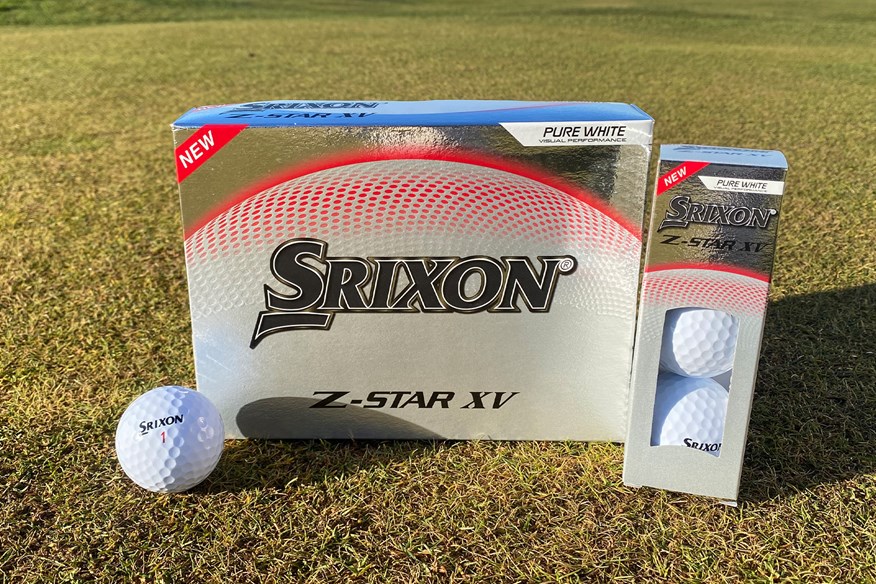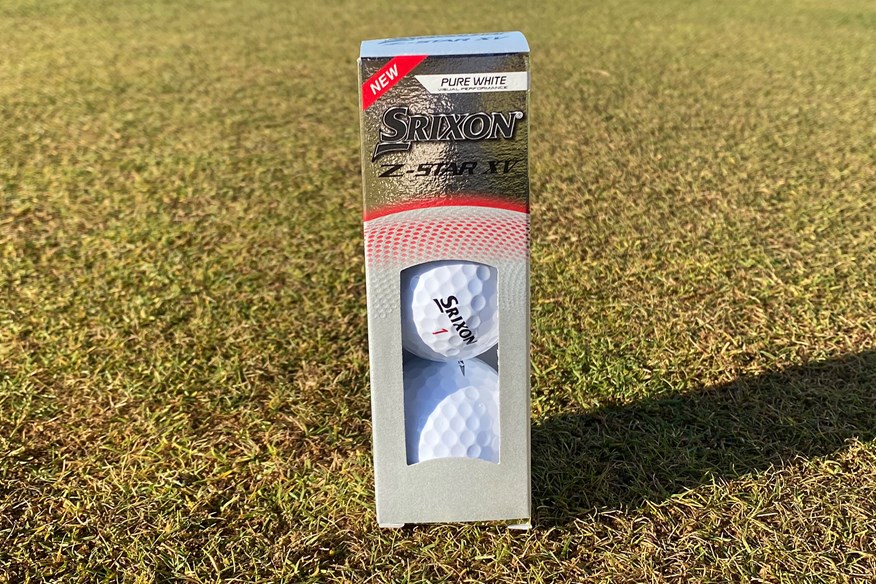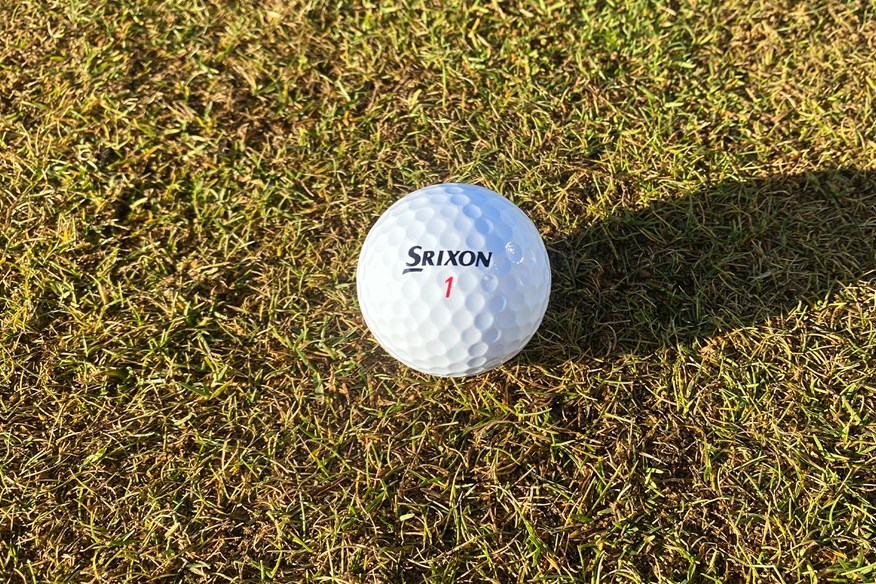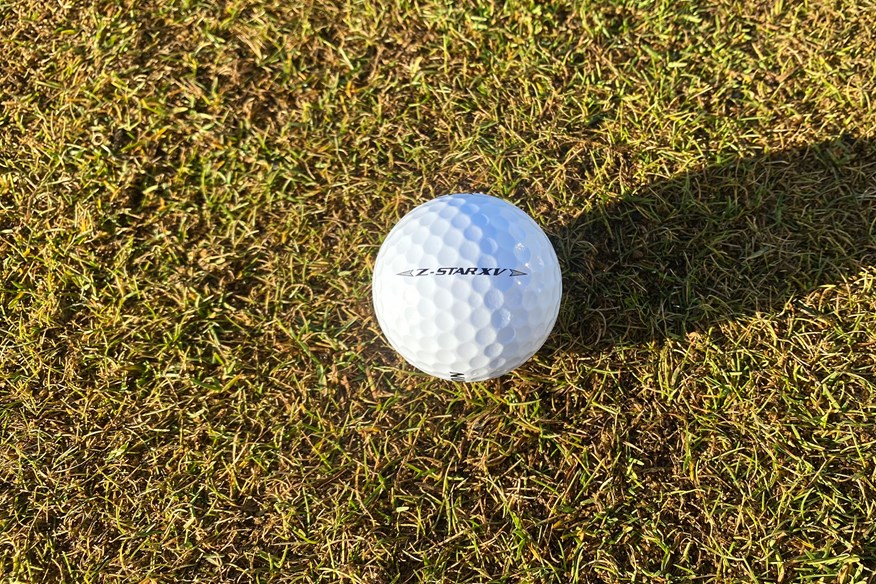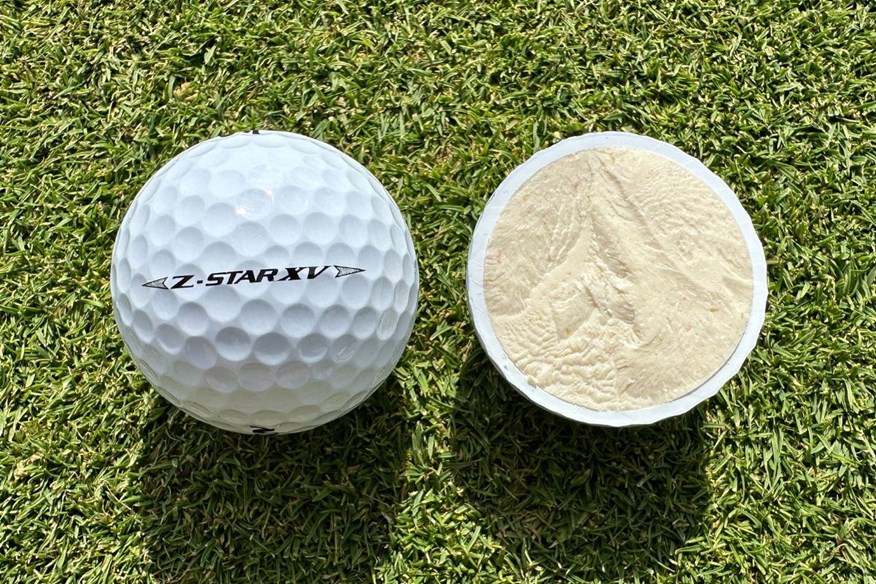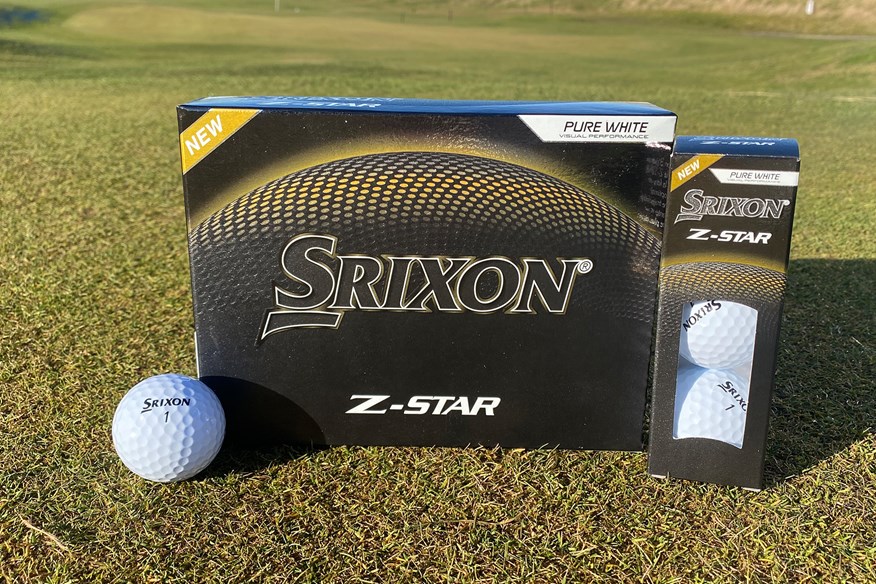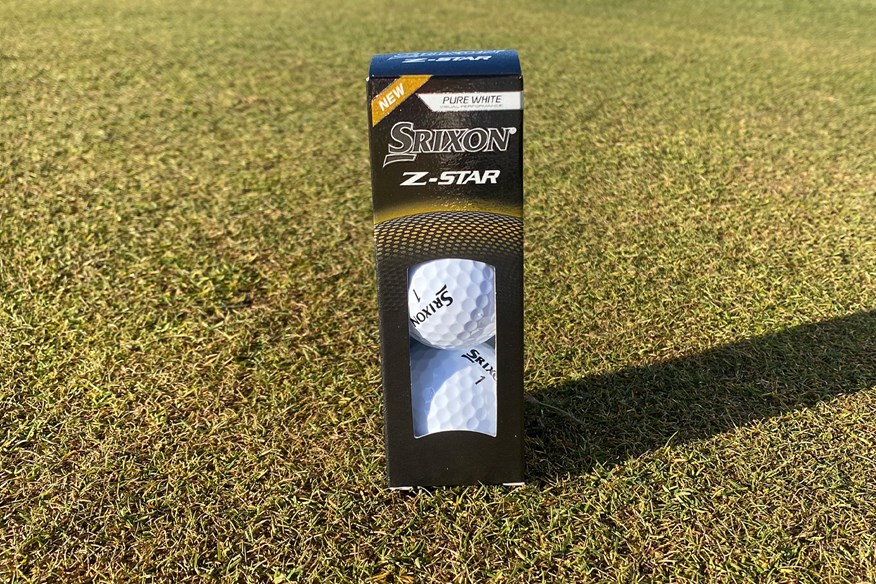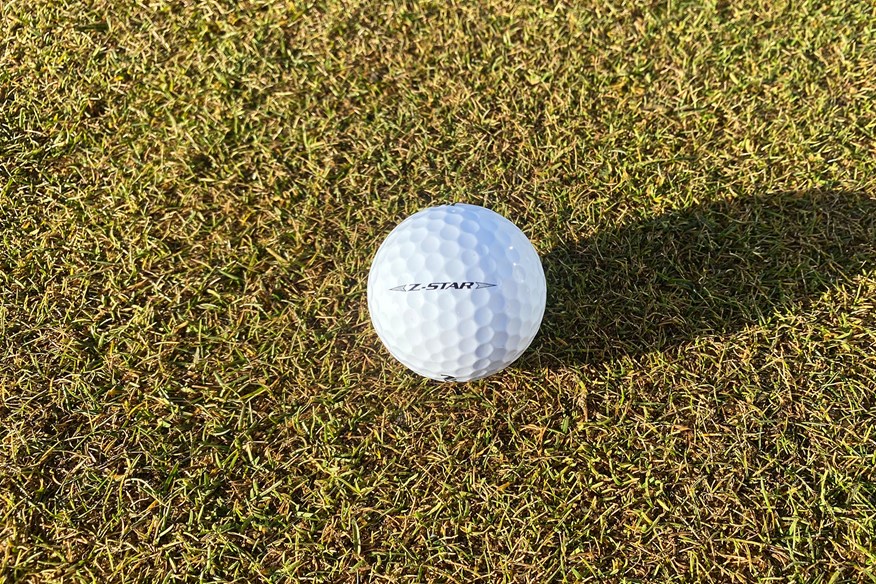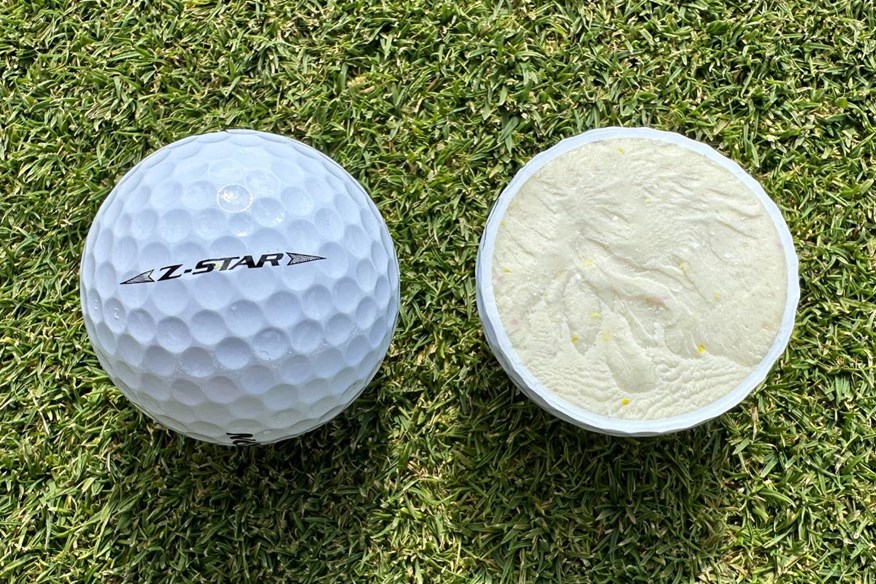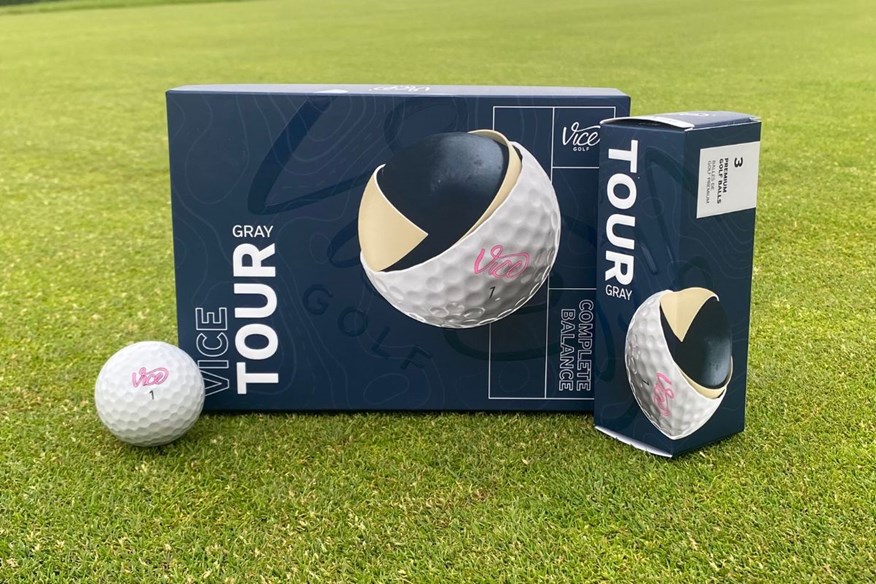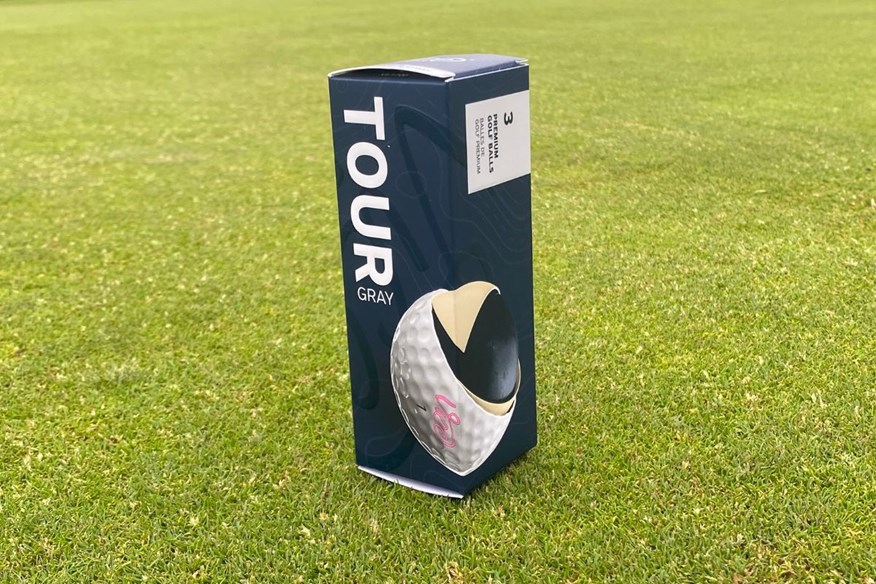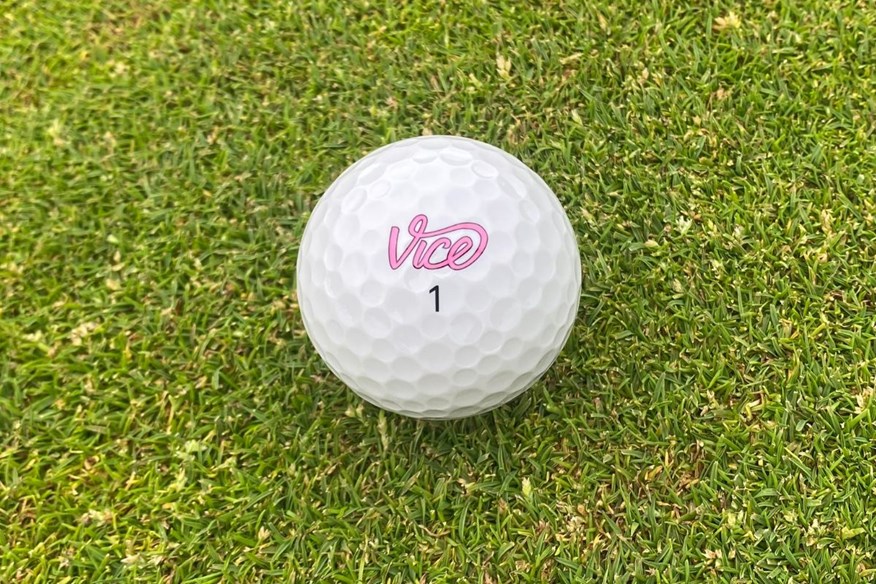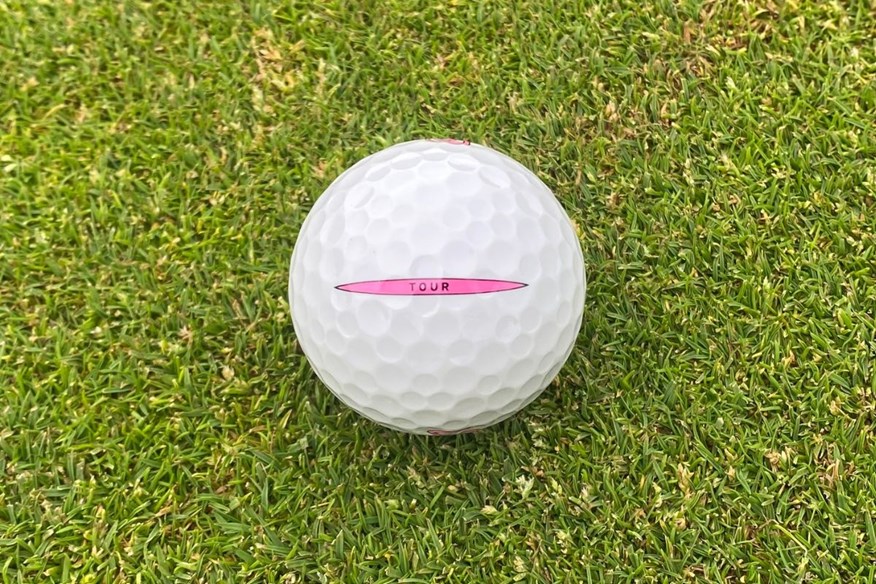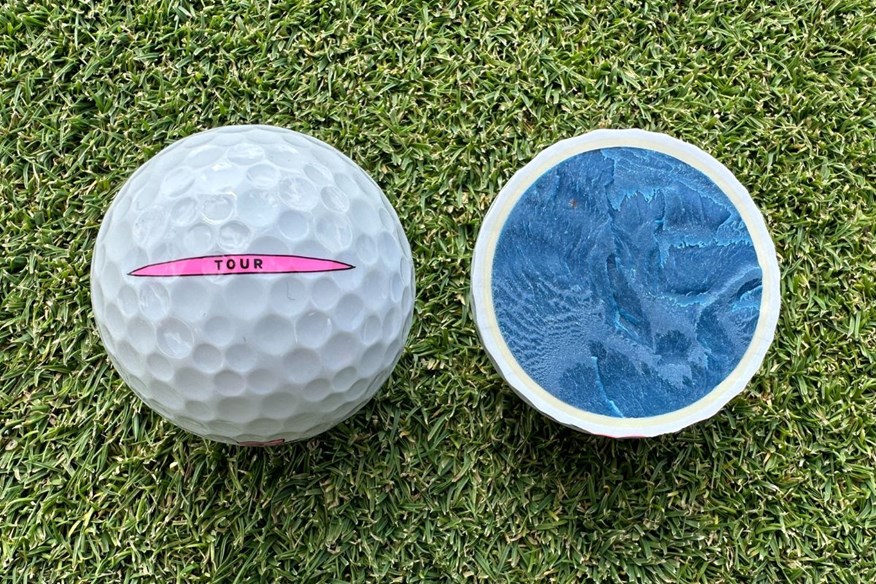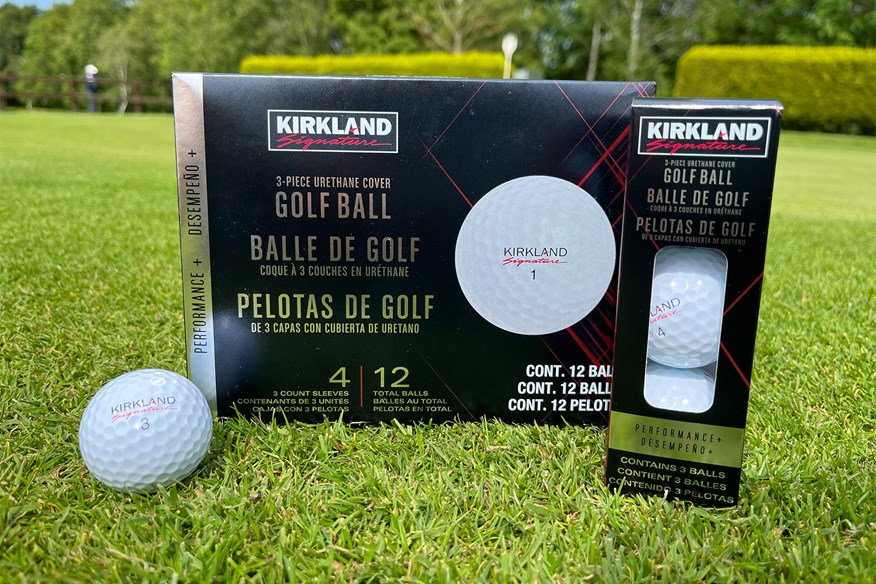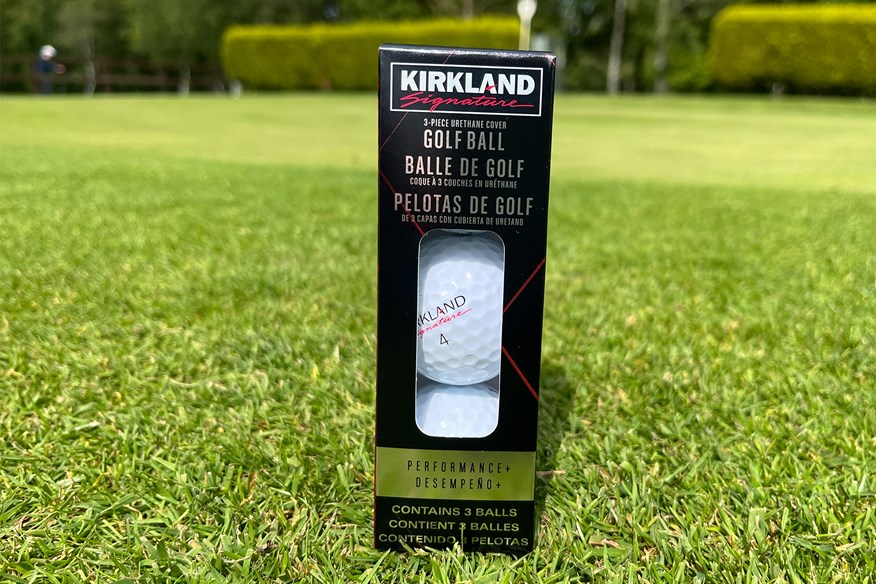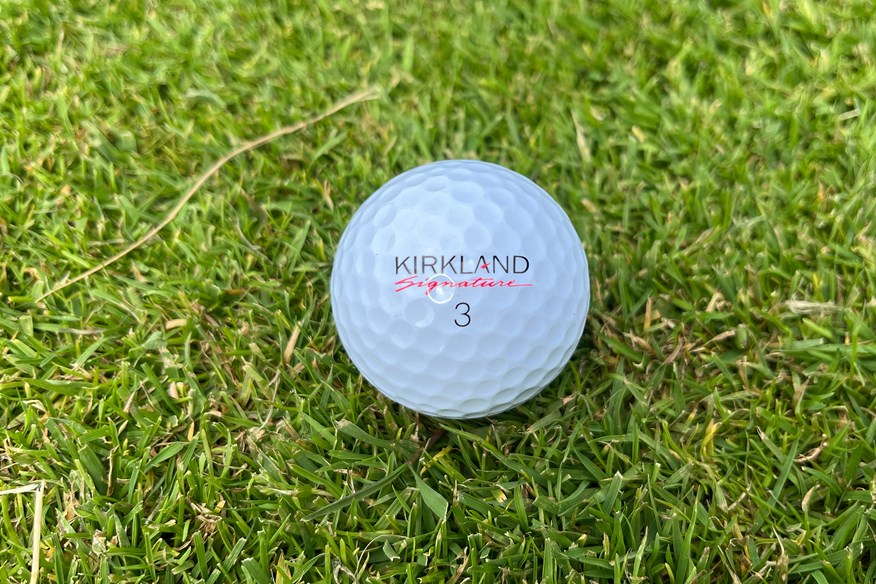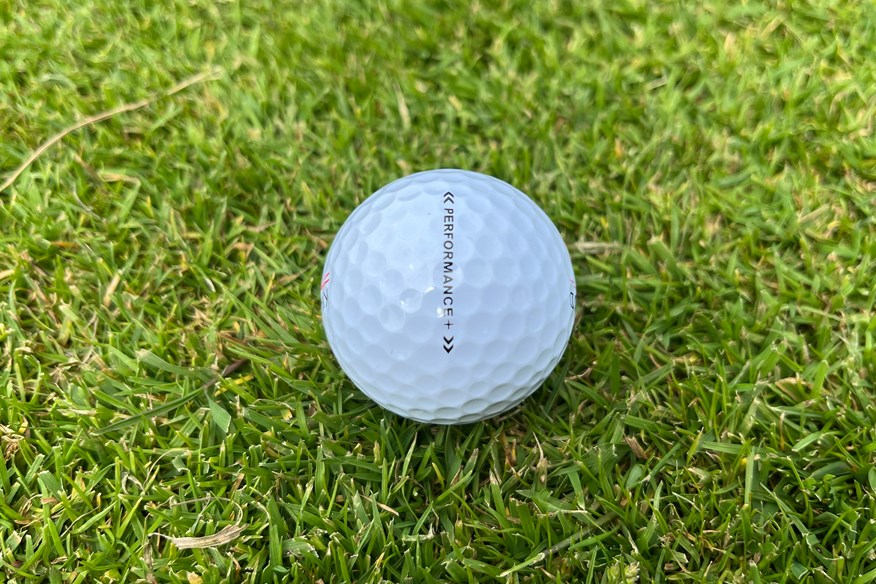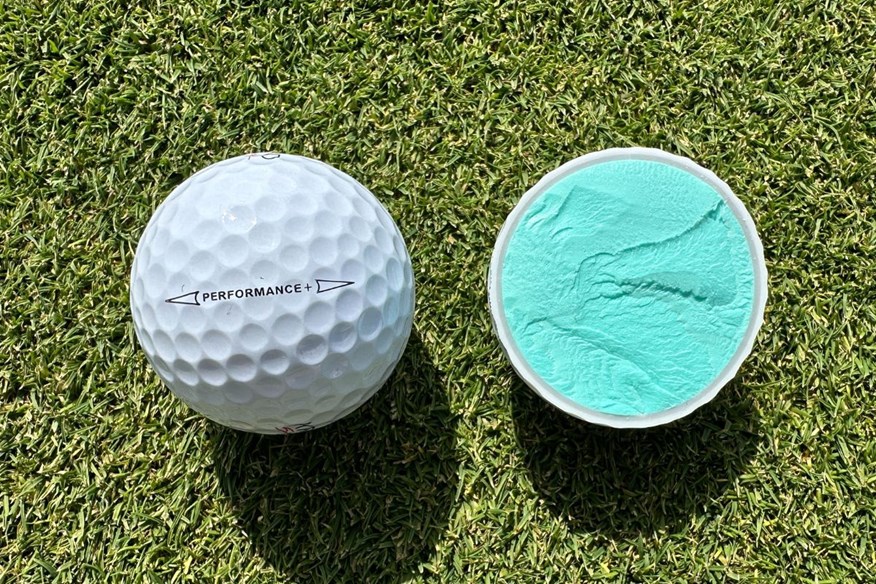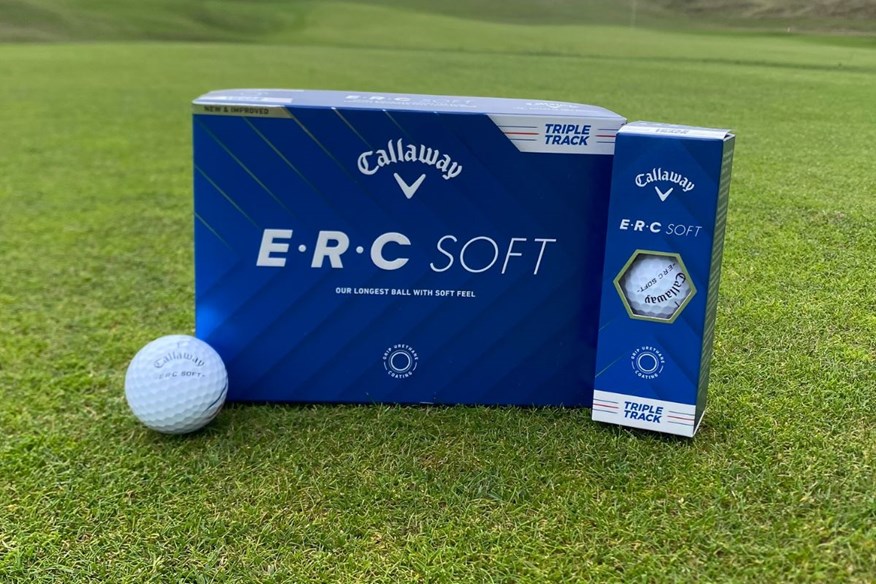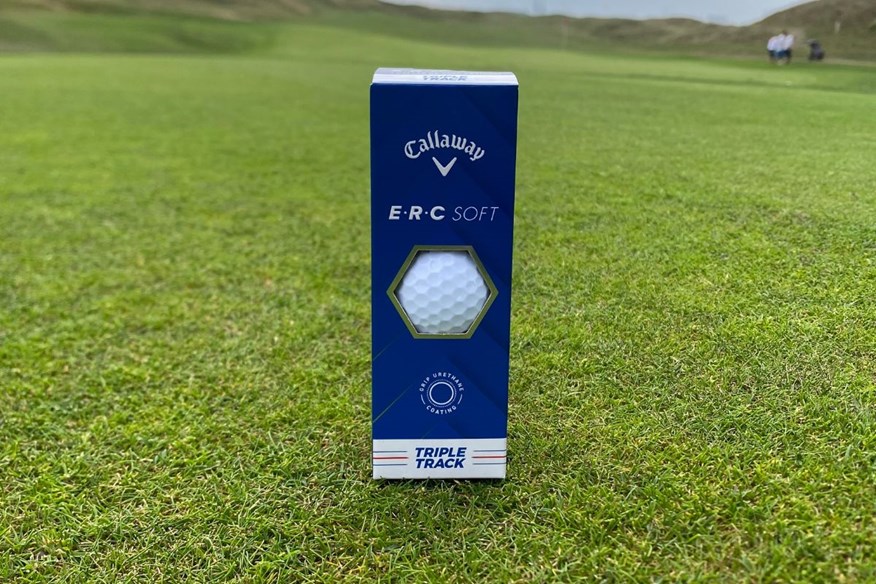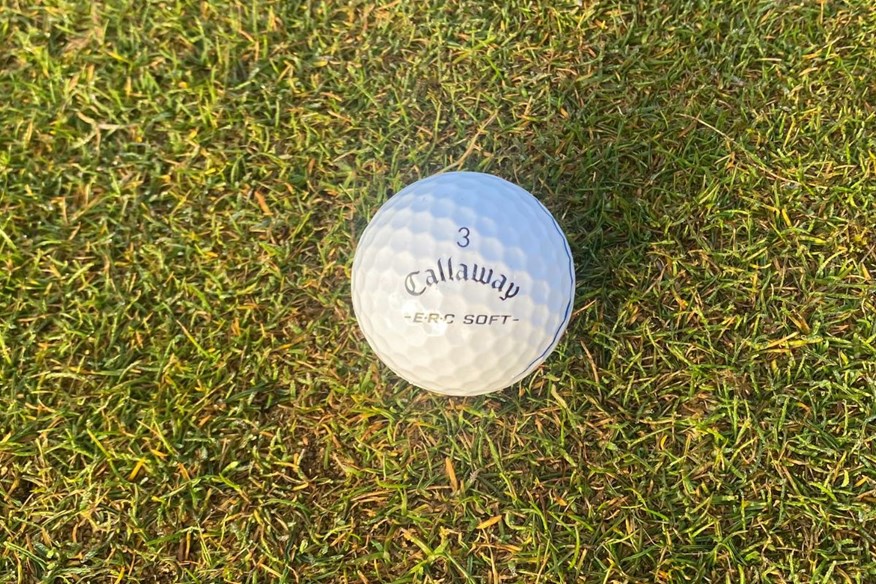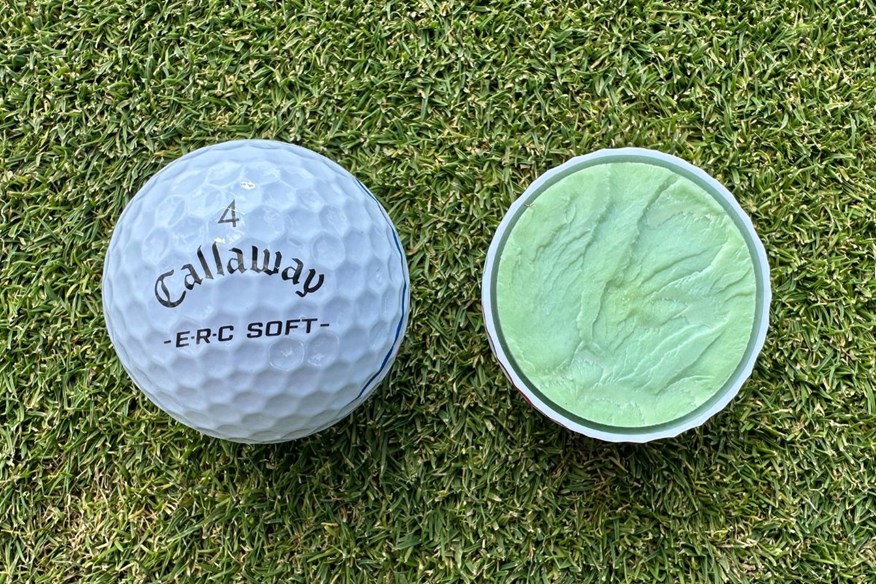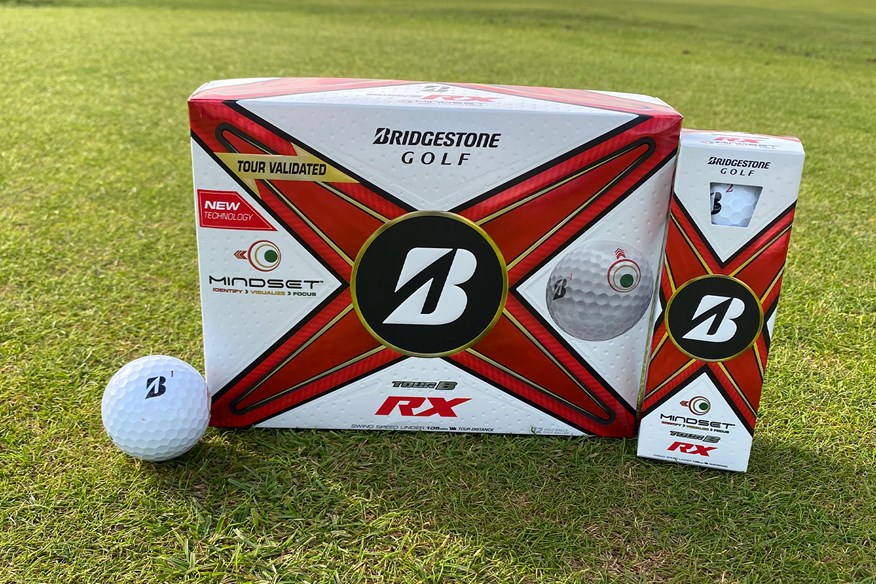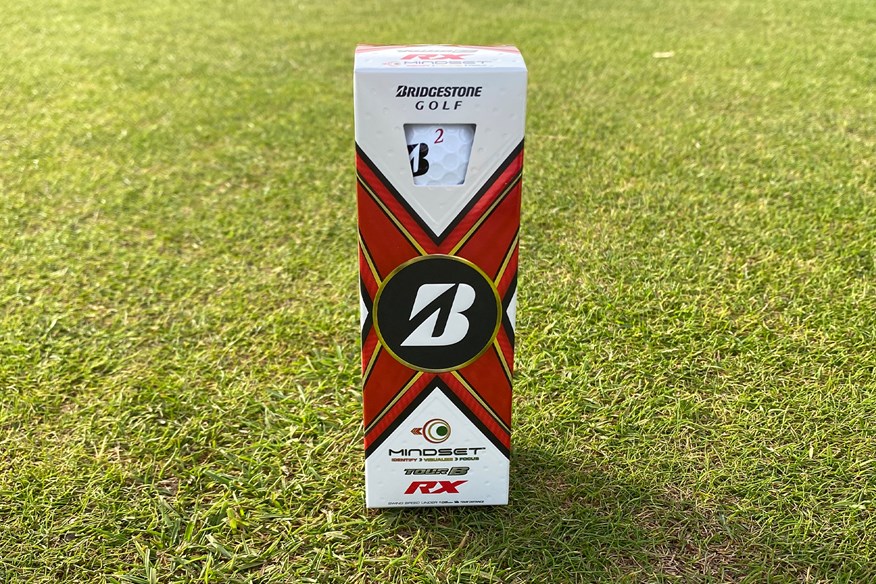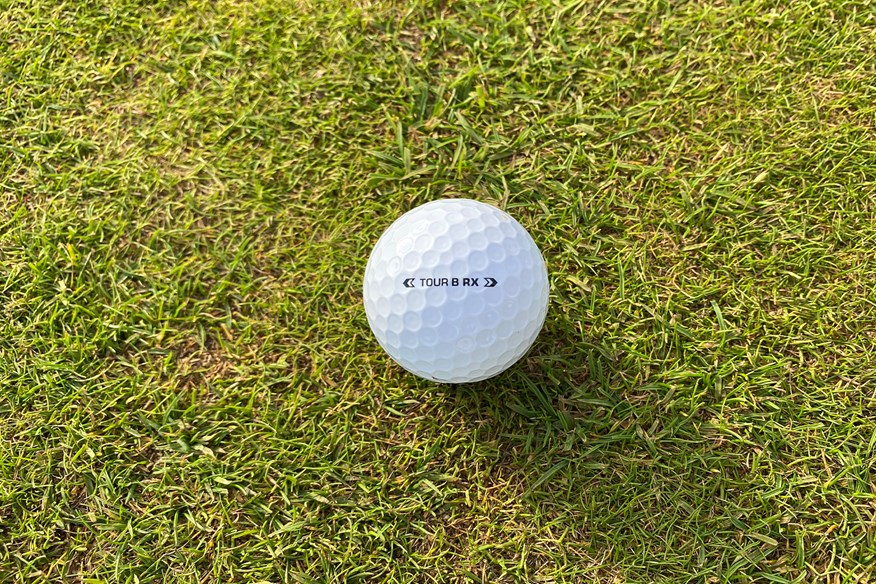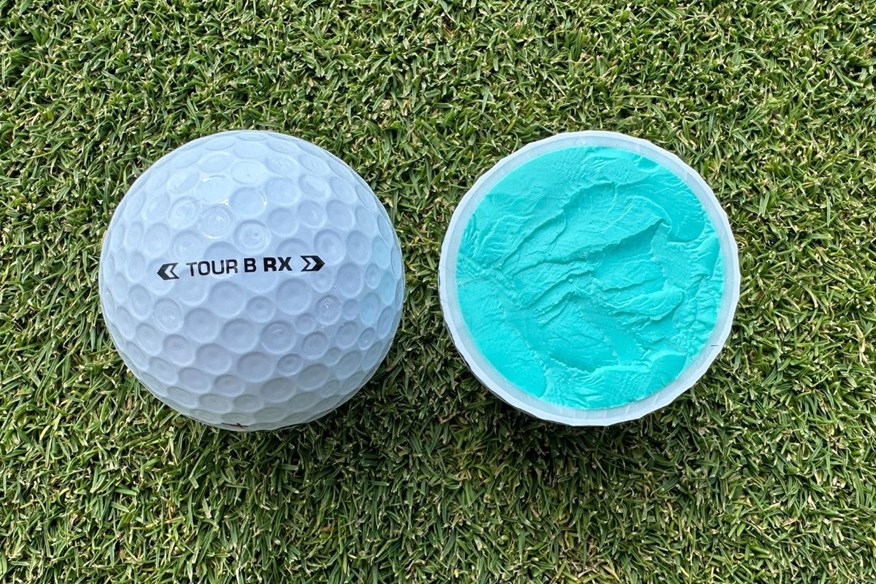Best 3-piece golf balls 2025: 29 models tested on-course and on an R&D robot
Published:
Click here to find out how we conducted our 2025 golf balls test
Our 2025 golf ball test has included more three-piece golf balls than any other construction. We’ve tested on-course and on a robot, to help you navigate this crowded marketplace, and find the right golf ball for your game
Jump to:
- At a glance
- Best 3-piece Tour-level golf balls
- 3-piece Tour-level golf balls robot test data
- Best 3-piece club golfer golf balls
- 3-piece club golfer golf balls robot test data
- Buying guide
- FAQs
- What to read next
The three-piece category of golf balls is extremely crowded because it encompasses such a versatile range of models. From the very best golf balls to the best golf balls for beginners and high-handicappers, you can go your entire golfing career without ever leaving the three-piece category.
While having so many options has its advantages, it can make it difficult to determine exactly which model you need. To assist you in your search, we’ve split the best three-piece golf balls into two categories – three-piece Tour-level and three-piece club golfer.
Best 3-piece golf balls 2025: At a glance
Tour-level
Best overall: Srixon Z-Star Diamond | View offer
Best low-compression: Srixon Z-Star | View offer
Club golfer
Best overall: Vice Tour | View offer
Best low-spin: Callaway ERC Soft | View offer
The best three-piece Tour-level golf balls are premium golf balls that rival the best four-piece and five-piece models. Whereas, the best three-piece club golfer balls are more suited to amateur golfers, making up the majority of the best golf balls for mid-handicappers.
Of the 62 golf balls we tested in our mammoth robot test, 29 of them (nearly half) were three-piece golf balls from 12 of the 13 brands represented in the test. Click the links below to see how we completed this year’s robot test and to find out exactly how we test golf equipment.
- 2025 golf ball robot test: 62 golf balls, 2,232 shots, 50,000 data points… find out what’s No.1 for you
- How we test golf equipment at Today’s Golfer
Three-piece golf balls are hugely popular, largely due to the No.1 ball in golf falling into the three-piece Tour-level category. The Titleist Pro V1 is the most played golf ball in the world. But does that mean it’s the right model for you?
We have the answer right here! If, after looking through the models listed below, you’re still looking for some help and advice, read through our detailed buying guide and FAQs section. Hopefully, you’ll find the best golf ball for your game.
Best 3-piece Tour-level golf balls 2025
The most dominant 3-piece Tour-level golf ball
Best overall three-piece golf ball


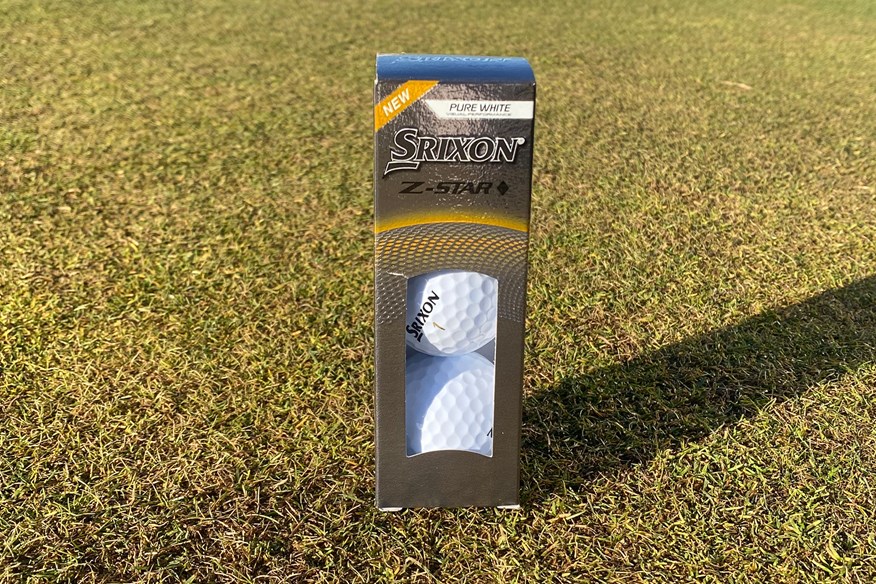
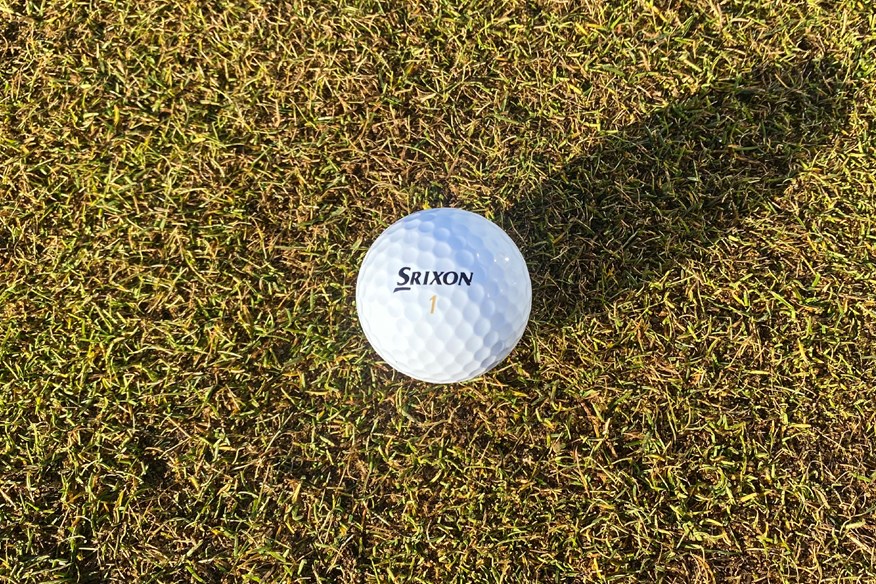
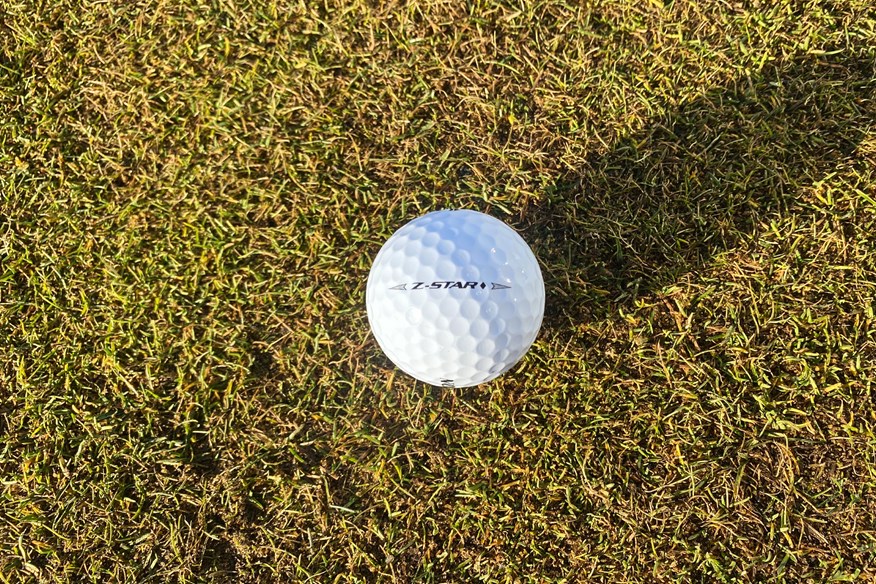
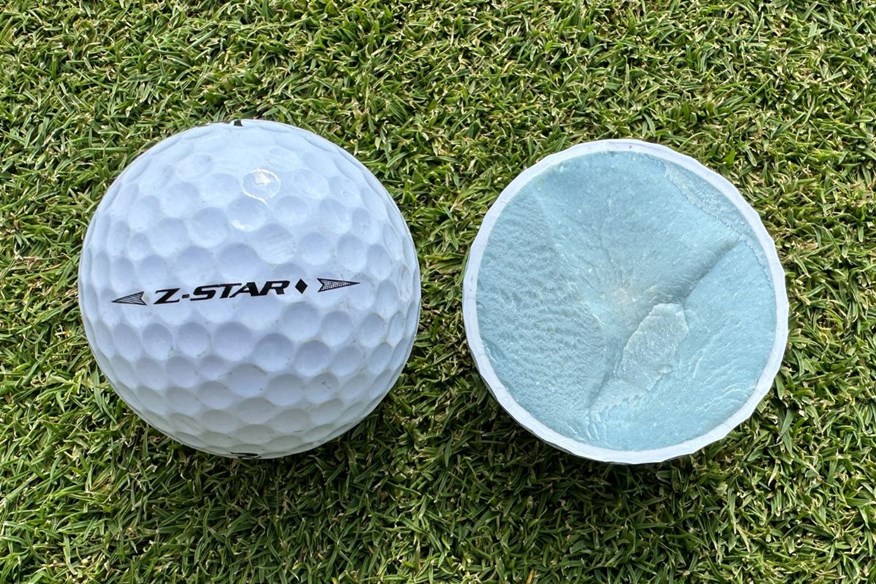
The Srixon Z-Star Diamond is one of the best high-spin golf balls. This golf ball was initially designed for Brooks Koepka, but it's become more popular among other Srixon staffers and amateur golfers. Based on our 2025 robot test results, it's clear to see why!
The Z-Star Diamond won an award in every category, barring one (off-the-tee performance), but where it did rank, it took the top spot. Let's have a quick run through the Z-Star Diamond's awards: gold medal for tee to green performance at 114mph, 93mph, and 78mph, gold medal for approach play, and gold medal for short-game performance.
Around the greens, the Z-Star Diamond is the best three-piece Tour-level golf ball you can play, and the second-best golf ball of all 62 tested, generating 6,137rpm at the 40-yard pitch shot.
However, it's unlikely you'll miss the green in the first place! The Z-Star Diamond is the best golf ball for firing at pins. This golf ball ranks second for descent angle (45.3°), fourth for carry distance consistency, and third for backspin (5,149rpm - one of only three golf balls with over 5,000rpm). This is a recipe for success when you're attacking pins.
The Z-Star Diamond is a consistent golf ball off the tee at all three driver swing speeds. So, whether you swing like Koepka or not, this golf ball will deliver strong numbers for your swing speed. The Z-Star Diamond is above the test average for ball speed and carry distance at all three driver swing speeds.
This golf ball cleaned up in the three-piece Tour-level category! The Z-Star Diamond has to be on your mind if you're looking for a new golf ball.
On-course verdict
The Srixon Z-Star Diamond delivers the optimal performance out of the three golf balls in the 2025 Z-Star range.
The Z-Star Diamond is brilliant if you’re looking for one of the best high-spin golf balls because it’s very easy to generate spin with this model. That being said, it’s definitely lower-spinning off the tee than the previous generation.
I’ve tested a heap of outstanding Tour-level golf balls over the past couple of years, but I don’t think any have impressed me as much as the Z-Star Diamond on approach shots.
If you think a golf ball that travels far and spins high sounds right for your game, then you have to try the Z-Star Diamond, regardless of your ability.
I absolutely love how this golf ball feels off every club face in my bag. I wouldn’t necessarily say it’s particularly firmer than the Z-Star or Z-Star XV, but I think the feedback is much stronger. Thanks to the solid feedback, the response is very satisfying on well-struck shots, but not so much when the contact isn’t as good. However, I think that’s what makes a good golf ball.
Of all the golf balls I’ve played with over the past couple of seasons, this is without a doubt the best-performing golf ball from tee to green.
The Z-Star Diamond performs optimally in every area, which makes it extremely difficult to criticise. It feels great, feedback is amazing, and performance is extraordinary.
I don’t know what more a golf ball can offer!
Read our full Srixon Z-Star Diamond golf ball review.
Pros
- Amazing control from tee to green
- High spinning in the iron and short game
- Fantastic feedback and response
Cons
- High-spinning nature does slightly hinder distance
| Carry distance (yds) | Driver 114mph - 270.7 | Driver 93mph - 207.8 | Driver 78mph - 161 | 7-iron - 153.1 |
| Ball speed (mph) | Driver 114mph - 163.6 | Driver 93mph - 133.8 | Driver 78mph - 113.1 | 7-iron - 108.7 |
| Backspin (rpm) | Driver 114mph - 2,988 | Driver 93mph - 2,838 | Driver 78mph - 2,719 | 7-iron - 5,149 | Pitch - 6,137 |
| Launch angle (°) | Driver 114mph - 11.2 | Driver 93mph - 12.5 | Driver 78mph - 13.6 | 7-iron - 20.5 | Pitch - 30 |
| Descent angle (°) | Driver 114mph - 39.4 | Driver 93mph - 32.6 | Driver 78mph - 28.1 | 7-iron - 45.3 | Pitch - 35.1 |
| Peak height (yds) | Driver 114mph - 34.5 | Driver 93mph - 22.4 | Driver 78mph - 15.7 | 7-iron - 29.3 | Pitch - 6.5 |
| Compression (psi) | 106 |
- Speed dimple pattern
- Thin premium Biomass cover
- Spin skin+ coating
- Fastlayer DG core 2.0
- 338 dimples
- 3-Piece construction
- Available in white and yellow
Silver medal for tee to green performance at 114mph
The Srixon Z-Star XV is the distance-oriented model in Srixon's Z-Star line-up, and it's the ball of choice for 2019 Champion Golfer Shane Lowry, 2021 Masters Champion Hideki Matsuyama, and Austria's only PGA Tour winner, Sepp Straka.
Despite being the supposed longest golf ball in the Z-Star range, the Z-Star XV isn't as long as the Z-Star Diamond at any of the three driver swing speeds tested. That being said, at 114mph, it's very close.
Add in the impressive approach play performance, and there's no surprise this golf ball won the silver medal for tee to green performance at the quick swing speed. The Z-Star XV ranked third for approach play in the entire test - sadly, behind the Z-Star and Z-Star Diamond.
The Z-Star XV is said to be the lowest-spinning Z-Star model, but even around the greens, it's slightly ahead of the Z-Star (albeit by 22rpm). The Z-Star XV might sound as though it's living in the shadow of the Z-Star and Z-Star Diamond. However, there's clearly a reason why it's so popular on Tour.
As well as being the second-best three-piece Tour-level golf ball for tee to green performance at 114mph, the Z-Star XV also won bronze for tee to green performance at 78mph, and bronze for approach play.
There's a lot to love about the Z-Star XV, and like the other two models in the Z-Star line-up, this is a brilliant golf ball for attacking pins with. It's incredibly versatile across all three swing speeds, and it puts itself in the conversation with the Z-Star and Z-Star Diamond.
On-course verdict
The Z-Star XV is incredibly popular on Tour, and it's easy to see why after just a couple of holes. This golf ball delivers great performance in every area with an emphasis on distance.
I can't say for sure whether I noticed considerably more distance over other golf balls in Srixon's Z-Star range, but it's definitely competitive.
The Z-Star XV is designed to be the lowest-spinning golf ball in the Z-Star line-up, but it's far from low-spinning. On the course, this ball stops very quickly when approaching and playing around greens - as you'd expect for a Tour-level golf ball.
I find the XV to have a slightly softer feel than the Z-Star Diamond, and for that reason, I don't think it's as responsive, but the feeling itself is very pleasant.
As I've already mentioned, this is a very popular Srixon golf ball on Tour, and it doesn't take long to realise why when you play with it on the golf course.
Pros
- Impressive tee to green performance
- Good Tour representation
- Great feel
Cons
- Lower-spinning than the Z-Star Diamond
| Carry distance (yds) | Driver 114mph - 270.6 | Driver 93mph - 207.7 | Driver 78mph - 160.8 | 7-iron - 154.2 |
| Ball speed (mph) | Driver 114mph - 163.4 | Driver 93mph - 133.6 | Driver 78mph - 113.2 | 7-iron - 108.7 |
| Backspin (rpm) | Driver 114mph - 2,936 | Driver 93mph - 2,857 | Driver 78mph - 2,654 | 7-iron - 4,930 | Pitch - 5,948 |
| Launch angle (°) | Driver 114mph - 11.2 | Driver 93mph - 12.6 | Driver 78mph - 13.8 | 7-iron - 20.7 | Pitch - 30.3 |
| Descent angle (°) | Driver 114mph - 39 | Driver 93mph - 32.9 | Driver 78mph - 27.6 | 7-iron - 45.2 | Pitch - 35.6 |
| Peak height (yds) | Driver 114mph - 34 | Driver 93mph - 22.6 | Driver 78mph - 15.5 | 7-iron - 29.3 | Pitch - 6.7 |
| Compression (psi) | 112 |
- Speed dimple pattern
- Thin premium Biomass cover
- Spin skin+ coating
- Fastlayer DG core 2.0
- 338 dimples
- 3-Piece construction
- Available in white and yellow
Silver medal for tee to green performance at 78mph and approach play performance
Srixon's Z-Star line-up has blown the three-piece Tour-level competition away. Granted, much of that is thanks to the Z-Star Diamond, but the Srixon Z-Star also contributed with a silver medal for tee to green performance at 78mph and approach play performance.
The Z-Star is right there with the Z-Star Diamond for approach play performance, but it sadly just misses out on top spot and has to settle for second-best out of all 62 golf balls tested. The Z-Star ranks fourth for descent angle (45.3°), fifth for carry distance consistency, and fifth for backspin (4,937rpm).
Being a lower-spinning golf ball than the Z-Star Diamond, it's hardly surprising to see the Z-Star rank lower in short-game performance. The Z-Star is the sixth-highest spinning three-piece Tour-level golf ball at the 40-yard pitch shot - firmly above the test average with 5,926rpm.
With a silver medal for tee to green performance at 78mph, the Z-Star performs best at slower swing speeds, ranking fifth overall. At more moderate and quicker swing speeds, the Z-Star isn't as strong off the tee, and that's perhaps why it's not as popular on Tour as Z-Star Diamond or Z-Star XV.
That being said, Z-Star is a golf ball for slower swing speed players to consider, especially if you want a golf ball you can trust when playing from the fairway.
On-course verdict
The Z-Star is my least-favoured golf ball in Srixon's Z-Star range, but that's not to say it will be for everyone. For my game, it doesn't perform as well from tee to green as the Diamond or XV.
This is noticeably softer than the Diamond and XV, which I think makes it less responsive, and it dampens the feedback.
On the whole, all three Z-Star golf balls are very closely matched, but on the course, I can definitely tell this golf ball isn't right for me off the tee because it doesn't spin enough. For some golfers, that will be a plus, but for my game, I require a higher-spinning model.
The Z-Star has the lowest compression rating of the three models in Srixon's Z-Star range, and for that reason, it works best for golfers with slower swing speeds because it's easier to eke out its performance. If you swing the club too quickly, you go beyond the threshold of optimal performance.
Pros
- Amazing tee to green performance
- Premium option for golfers with slower swing speeds
- Very soft feel
Cons
- Doesn't perform as well at quicker swing speeds
| Carry distance (yds) | Driver 114mph - 269.4 | Driver 93mph - 206.6 | Driver 78mph - 161.1 | 7-iron - 154.1 |
| Ball speed (mph) | Driver 114mph - 162.7 | Driver 93mph - 133.1 | Driver 78mph - 113.1 | 7-iron - 108.7 |
| Backspin (rpm) | Driver 114mph - 2,900 | Driver 93mph - 2,859 | Driver 78mph - 2,693 | 7-iron - 4,937 | Pitch - 5,926 |
| Launch angle (°) | Driver 114mph - 11.1 | Driver 93mph - 12.6 | Driver 78mph - 13.7 | 7-iron - 20.8 | Pitch - 30.6 |
| Descent angle (°) | Driver 114mph - 38.5 | Driver 93mph - 32.8 | Driver 78mph - 28.1 | 7-iron - 45.3 | Pitch - 35.9 |
| Peak height (yds) | Driver 114mph - 33.3 | Driver 93mph - 22.4 | Driver 78mph - 15.8 | 7-iron - 29.5 | Pitch - 6.9 |
| Compression (psi) | 92 |
- Speed dimple pattern
- Thin premium Biomass cover
- Spin skin+ coating
- Fastlayer DG core 2.0
- 338 dimples
- 3-Piece construction
- Available in white and yellow
- An alternative model is the Divide
Silver medal for short game performance
Best premium Bridgestone golf ball
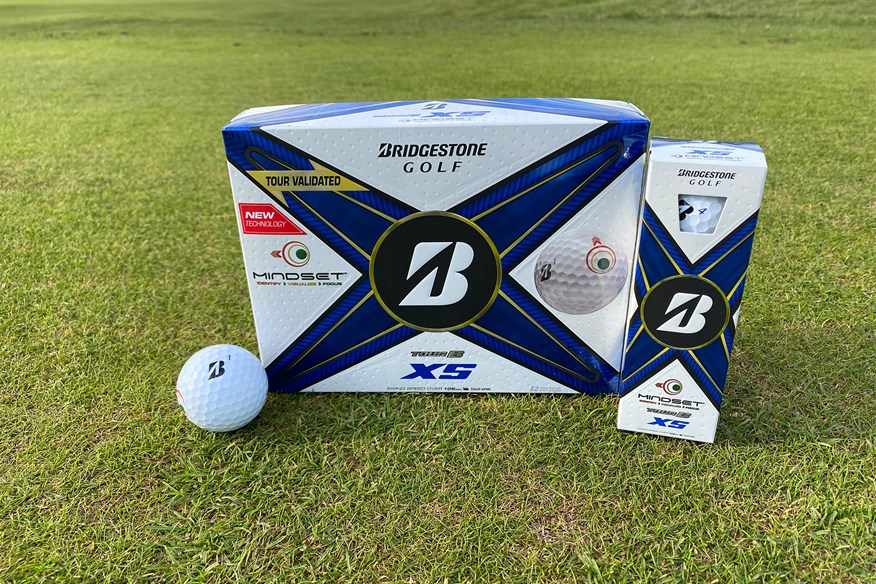

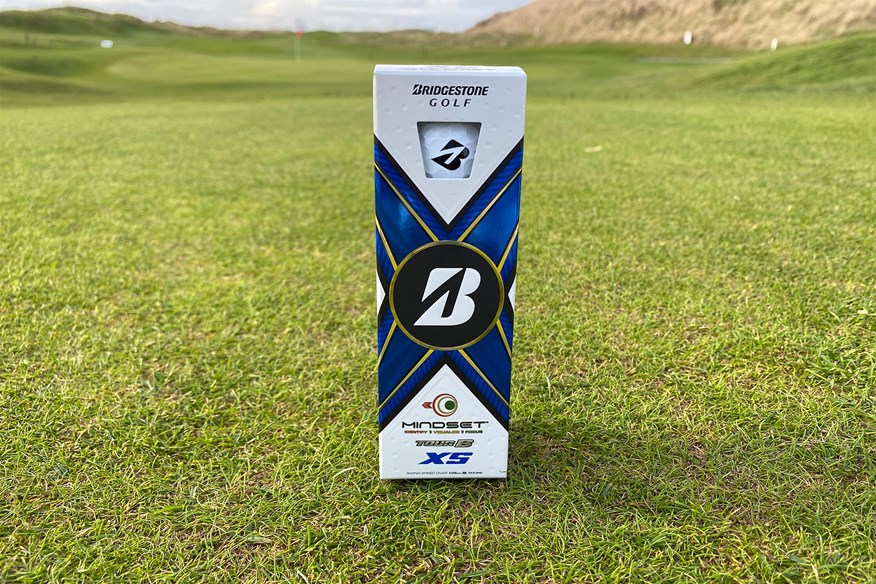
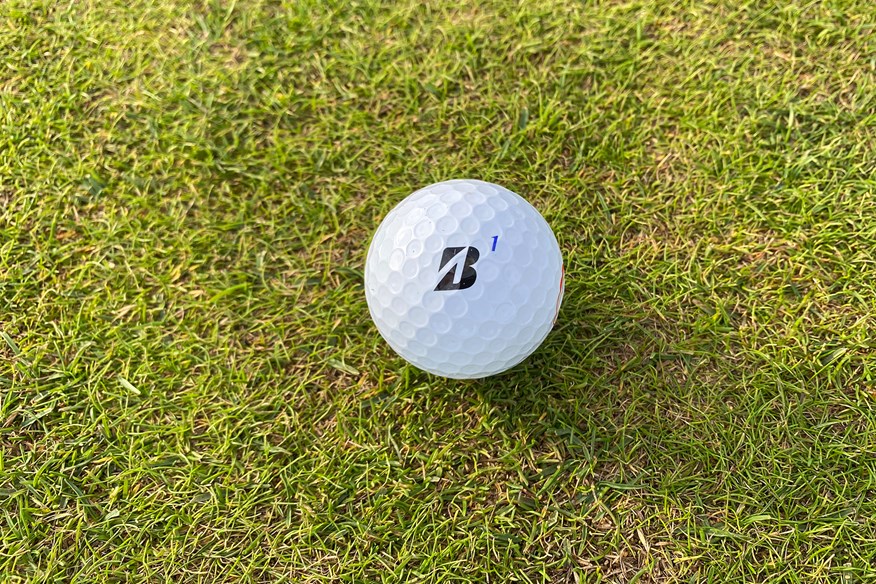
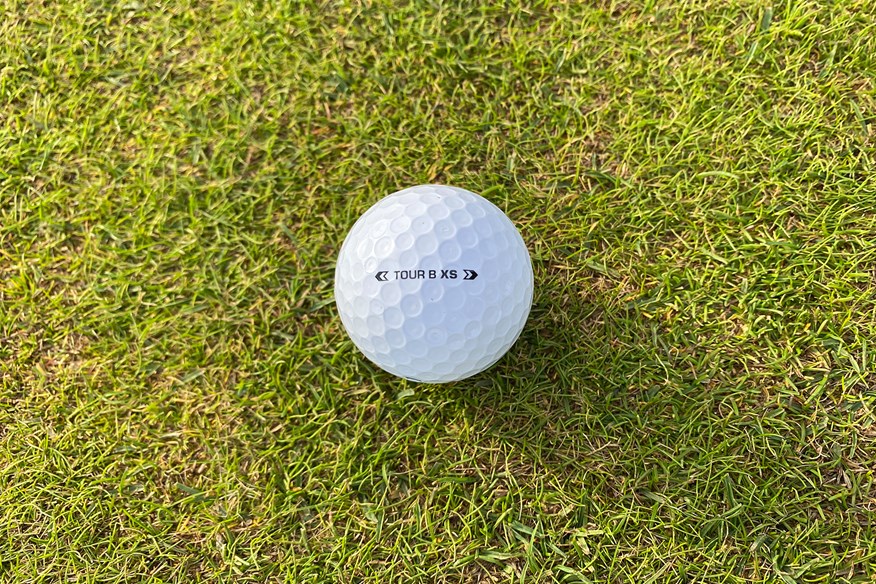
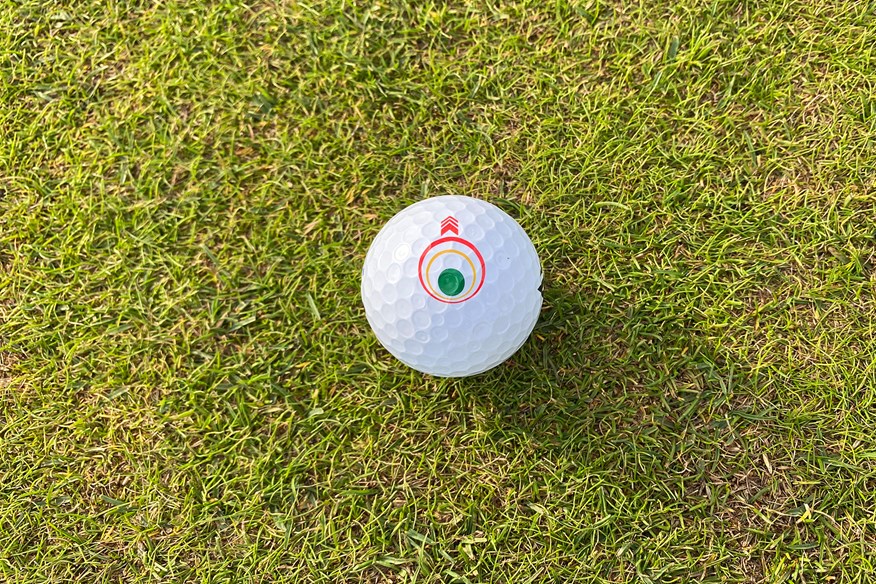
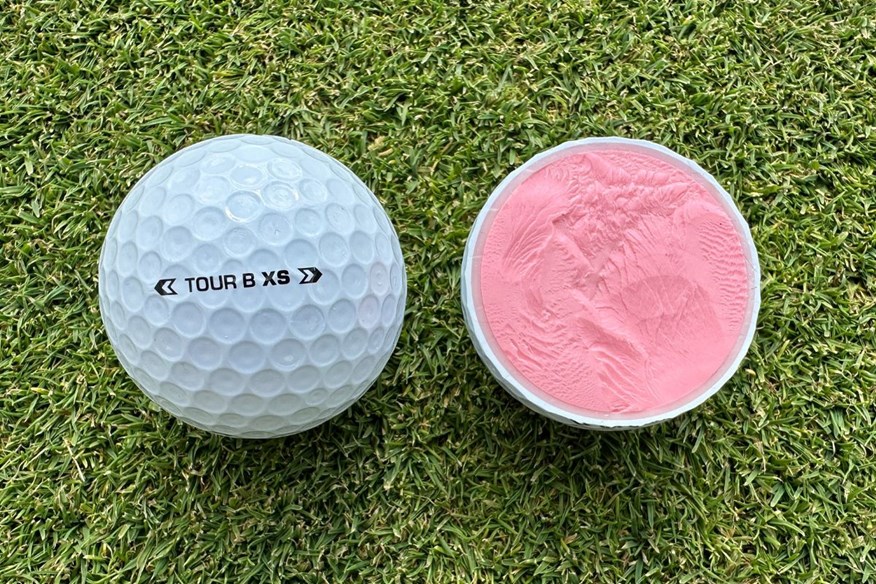
Bridgestone's Tour B XS is designed to spin higher than the Tour B X and produce a softer feeling. While our robot can't comment on the feel of this golf ball, it can tell us if it is, in fact, higher-spinning than its firmer counterpart.
Winning the silver medal for short game performance, the Tour B XS is higher-spinning around the greens than the Tour B X (6,036rpm vs. 5,972rpm). It's not drastically higher spinning, but you can expect more grab and control.
That transfers into approach play. Within the three-piece Tour-level category, the Tour B XS is the highest-spinning golf ball with over 5,000 rpm - one of only two (5,170). It's also the second-highest-spinning golf ball in the entire test.
Unfortunately, due to the dominance of the Z-Star range, the Tour B XS just misses out on a podium place for approach play performance.
Off the tee, the high-spinning nature of the Tour B XS hurts its overall performance. At all three driver swing speeds, it ranks low, being the highest-spinning model at 78mph (second overall) and 93mph (first overall), and the second-highest-spinning golf ball at 114mph (third overall).
There'll be a lot of people put off by how much the Tour B XS spins, and it's a big reason why Tiger Woods switched to the Tour B X. However, if you struggle to generate spin, the Tour B XS is a golf ball you should definitely consider. I love it for that exact reason, and while it might not go as far off the tee, it makes up for the reduced distance by offering amazing spin and control.
On-course verdict
The Tour B XS isn’t a model found on Tour; the Tour B X is a much more popular model among the pros. For a golfer who’s looking for a soft-feeling golf ball that easily generates spin and has a driver swing speed north of 105mph, the Tour B XS is definitely a model to consider.
Some golf balls are able to work for a wide range of golfers. However, I wouldn’t say that’s the case with the Tour B XS.
As a golfer who needs help adding spin and height off the tee, the Tour B XS is a brilliant golf ball for me. I feel as though from tee to green, this ball performs incredibly well and delivers everything I need and want from a golf ball.
The Tour B XS is a soft-feeling golf ball, which I’m not normally a fan of, but I am with the Tour B XS because it’s very responsive. I think you get a lot of feedback from every shot you play with the Tour B XS.
Read our full Bridgestone Tour B XS golf ball review.
Pros
- Incredible feel and response from every shot
- Amazing spin and control around the green
- Mindset is a brilliant tool
Cons
- Not the most versatile model
| Carry distance (yds) | Driver 114mph - 268.4 | Driver 93mph - 206.7 | Driver 78mph - 160.5 | 7-iron - 153.5 |
| Ball speed (mph) | Driver 114mph - 162.7 | Driver 93mph - 133.6 | Driver 78mph - 112.8 | 7-iron - 109 |
| Backspin (rpm) | Driver 114mph - 2,964 | Driver 93mph - 3,059 | Driver 78mph - 2,795 | 7-iron - 5,170 | Pitch - 6,036 |
| Launch angle (°) | Driver 114mph - 11 | Driver 93mph - 12.3 | Driver 78mph - 13.7 | 7-iron - 20.3 | Pitch - 30 |
| Descent angle (°) | Driver 114mph - 38.6 | Driver 93mph - 33.6 | Driver 78mph - 28.4 | 7-iron - 45.2 | Pitch - 35.3 |
| Peak height (yds) | Driver 114mph - 33.1 | Driver 93mph - 22.8 | Driver 78mph - 15.8 | 7-iron - 29.1 | Pitch - 6.7 |
| Compression (psi) | 99 |
- REACTIV X System
- REACTIV iQ Smart Cover Technology
- XCLRNT mid-layer
- Gradational Core
- Dual Dimple
- Seamless Cover
- 330 dimples
- 3-Piece construction
- Available in white and yellow
- An alternative model is the Mindset
Silver medal for off-the-tee performance
Best PXG golf ball


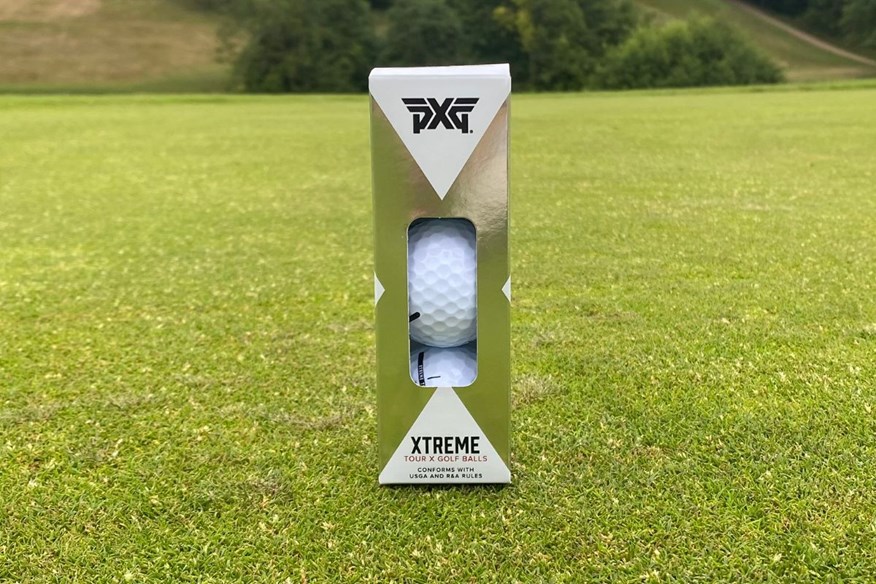
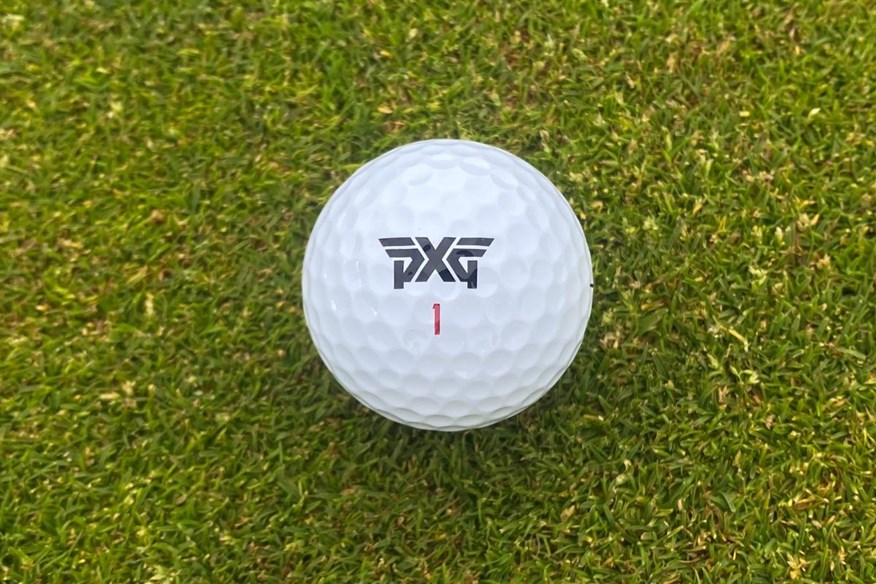
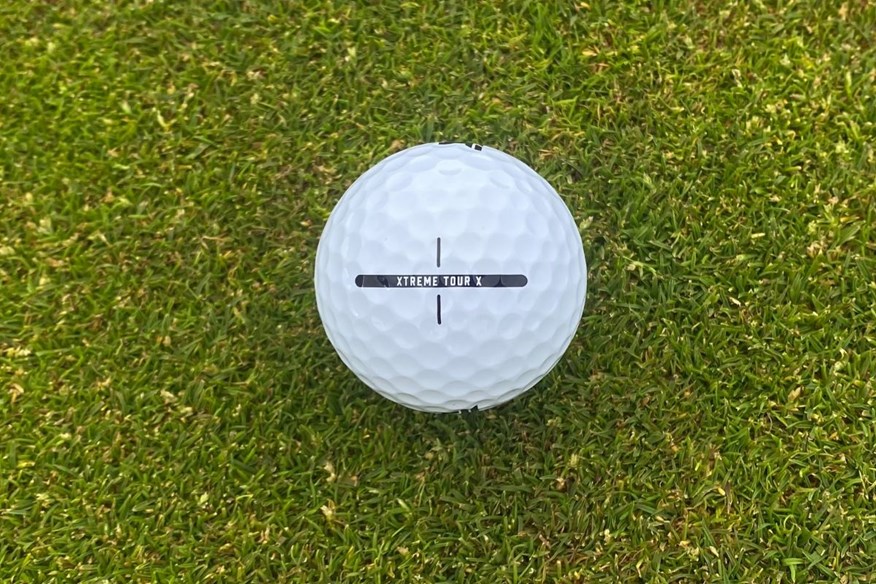

The second generation of PXG golf balls are very impressive, and the Xtreme Tour X model emerged from our test as being the better-performing model compared to the Xtreme Tour. Especially off the tee, being the second-best golf ball in this category.
At all three driver swing speeds, the Xtreme Tour X is a long and fast golf ball off the tee, making it an incredibly versatile option for any golfer to consider. At 114mph, it's the third longest (272.8yds) and second fastest (164mph), at 93mph, it's the second longest (209.4yds) and second fastest (134.1mph), and at 78mph, it's the fourth longest (160.8yds) and third fastest (113mph). A seriously impressive golf ball off the tee for all golfers.
Approaching and playing around greens, you can expect a high-performing golf ball that will easily sit and grab, being the fifth-highest-spinning golf ball (4,820rpm) and having the second steepest descent angle (45.2°) from the 7-iron shot, and being the fourth-highest-spinning model (5,961rpm) with the 40-yard pitch shot.
Combine off-the-tee performance with approach play performance, and it's easy to see how the Xtreme Tour X also won bronze for tee to green performance at 114mph and 93mph.
The only issue with the Xtreme Tour X is its carry distance consistency with the 7-iron shot, ranking 46th overall. Take away the inconsistent distances when approaching greens, and you have an extremely solid golf ball that could easily have won more awards.
On-course verdict
I haven't had the pleasure of playing with the PXG Xtreme Tour X golf balls, but fellow TG Equipment Writer, Will Shreeve-Peacock, has - here's his verdict:
"As a golfer who religiously plays the Titleist Pro V1x, I was pleasantly surprised to find that the Xtreme Tour X is about as close to the real thing as I’ve seen to my go-to ball.
"While the urethane cover does feel and look slightly different, the overall feedback and performance felt instantly familiar.
"Off the face, there’s plenty of speed, but also ample spin with irons and in the short game. Around the greens and off the putter, the feel was virtually identical to the Pro V1x, soft, responsive, and confidence-inspiring. Just what I play the V1x for!
"The long-game performance impressed me the most: it feels soft off the face, launches well, and doesn’t spin up too much, addressing one of the issues I had with the original PXG Xtreme."
Pros
- Brilliant performance off the tee
- Great tee to green performance
- Amazing value
Cons
- Inconsistent distances when approaching greens
| Carry distance (yds) | Driver 114mph - 272.8 | Driver 93mph - 209.4 | Driver 78mph - 160.8 | 7-iron - 154.7 |
| Ball speed (mph) | Driver 114mph - 164 | Driver 93mph - 134.1 | Driver 78mph - 113 | 7-iron - 108.7 |
| Backspin (rpm) | Driver 114mph - 2,829 | Driver 93mph - 2,688 | Driver 78mph - 2,458 | 7-iron - 4,820 | Pitch - 5,961 |
| Launch angle (°) | Driver 114mph - 11.2 | Driver 93mph - 12.7 | Driver 78mph - 14 | 7-iron - 20.9 | Pitch - 30.2 |
| Descent angle (°) | Driver 114mph - 38.4 | Driver 93mph - 32.2 | Driver 78mph - 27.4 | 7-iron - 45.2 | Pitch - 35.3 |
| Peak height (yds) | Driver 114mph - 33.3 | Driver 93mph - 22.4 | Driver 78mph - 15.5 | 7-iron - 29.5 | Pitch - 6.6 |
| Compression (psi) | 112 |
- High-speed polybutadiene core
- lonomer mid-layer
- Soft yet durable cover
- High penetrating trajectory
- Dual Dimple
- Seamless Cover
- 338 dimples
- 3-Piece construction
- Available in white only
Best 3-piece club golfer golf balls 2025
No.1 3-piece club golfer model
This is one of my most highly anticipated golf balls of the entire test. Ever since I tested the Vice Tour on-course, I've been waiting to see how it would perform in our robot test. I'm very pleasantly surprised.
I'm a fan of the Tour, but I never expected this golf ball would scoop up five awards in the three-piece club golfer category. As well as being the best golf ball for tee to green performance at 114mph, the Tour won the silver medal for tee to green performance at 93mph, off-the-tee performance, and short game performance, plus the bronze medal for tee to green performance at 78mph.
This golf ball is the real deal - and it doesn't have a urethane cover. That's quite possibly a reason as to why it's low-spinning when approaching greens (4,216rpm). However, around the greens, that spin shoots up, and it's the second-highest-spinning model with 5,967rpm (14th overall).
Short game and approach play performance is very clearly solid, but off the tee is where the Tour really gets you excited. At 114mph, this is the longest (271.4yds) and second-fastest (163.3mph) golf ball, at 93mph, it's the longest (208.3yds) and third-fastest (133.4mph), and at 78mph, it's the second-longest (160.8yds) and second-fastest (113.2mph).
There's a ton to like about the Vice Tour, and factoring in the price, as well as its domination, this is the best three-piece club golfer model.
On-course verdict
I would say the Vice Tour is a suitable option for a wide range of golfers because, as a whole, it’s a decent, well-rounded golf ball.
One area where the Vice Tour impresses me is with how well it propels off the face of a long iron. Distance is strong even into the wind, and there’s a more pleasant feedback from this ball than I feel from any of the golf balls in Vice’s Pro range.
I wouldn’t go as far as to say the Vice Tour is a soft-feeling golf ball or a firm-feeling golf ball. I would place it somewhere in the middle, with a medium feel.
Having played with Vice’s Pro Plus, Pro, and Pro Air golf balls, I would say that this golf ball is more responsive than all of those. The feel off the face isn’t as profound as other golf balls I’ve played with, but it definitely isn’t as muted as other Vice golf balls.
This helps to provide more feedback from your shot, which is something I like, but it isn’t something that every golfer wants. The responsiveness of the Vice Tour could be better, but for a golf ball with a Surlyn cover, it’s pretty good.
Whether you have a fast swing speed or a slow swing speed, the Vice Tour should definitely be on your radar.
Read our full Vice Tour golf ball review.
Pros
- Consistent and tight dispersion
- Impressive on-course distance
- Incredible value for money
Cons
- Not much grab on short approach shots
| Carry distance (yds) | Driver 114mph - 271.4 | Driver 93mph - 208.3 | Driver 78mph - 160.8 | 7-iron - 158.1 |
| Ball speed (mph) | Driver 114mph - 163.3 | Driver 93mph - 133.4 | Driver 78mph - 113 | 7-iron - 108.7 |
| Backspin (rpm) | Driver 114mph - 2,769 | Driver 93mph - 2,635 | Driver 78mph - 2,381 | 7-iron - 4,216 | Pitch - 5,967 |
| Launch angle (°) | Driver 114mph - 11.1 | Driver 93mph - 13 | Driver 78mph - 14 | 7-iron - 21.5 | Pitch - 30.6 |
| Descent angle (°) | Driver 114mph - 37.7 | Driver 93mph - 32.2 | Driver 78mph - 27.3 | 7-iron - 44.6 | Pitch - 35.8 |
| Peak height (yds) | Driver 114mph - 32.6 | Driver 93mph - 22.4 | Driver 78mph - 15.5 | 7-iron - 29.6 | Pitch - 6.7 |
| Compression (psi) | 112 |
- Enhanced mid-acid Surlyn cover
- High resilience and low stiffness composition
- Size-optimized High Energy Speed Core (HESC)
- 312 dimples
- 3-Piece construction
- Available in white and grey
Gold medal for short game performance
Kirkland golf balls are known for being high-spinning. The V2.0 was, and so is the V3.0. That's not an issue if you struggle to get the ball in the air or find it difficult to hit and hold greens. It also means the Signature V3.0 is amazing around the greens.
The Signature V3.0 is the gold medal winner for short game performance, in this category, generating 6,050rpm. Of all 62 golf balls tested, it's the seventh-highest-spinning golf ball.
Spin persists throughout the bag, and with the 7-iron shot, the Signature V3.0 is once again the highest-spinning three-piece club golfer model (4,861rpm). It also lands with the steepest descent angle (45°).
You might think the high-spinning nature will hurt how the V3.0 performs off the tee, but is that the case? Definitely not. The V3.0 is the bronze medal winner for off-the-tee performance.
It does generate a lot of spin, but it's also long and fast at all three swing speeds. At the fastest swing speed, it's the third-longest (271yds) and fastest (163.5mph), at the moderate swing speed, it's the third-longest (208yds) and fastest (133.6mph), and at the slower swing speed, it's the third-longest and fourth-fastest (112.8mph).
With the Kirkland Signature V3.0, you are signing yourself up to play with a high-spin golf ball, but if you need spin, it's one of the best models you can play with.
On-course verdict
Over the years, these golf balls have been highly regarded by many golfers and heavily scrutinised by others. Kirkland’s Signature three-piece golf balls are known for delivering high spin, and this is no different with their V3.0, as it ranks among the best high-spin golf balls.
The biggest issue the V3.0 has is that its spin compromises distance, but for some golfers, that won’t be an issue whatsoever.
When I took this ball out on the course, I couldn’t criticise its distance in the long game, but then again, high-spin golf balls suit my game.
I’m a big believer that for the majority of golfers, spin is your friend. You’re guaranteed a golf ball that easily generates spin by playing with the V3.0. Therefore, I believe that more golfers would benefit from playing with this golf ball than not playing with this golf ball.
I’m not normally a fan of soft-feeling golf balls, but I must say that the V3.0 feels good off the club face. I wouldn’t say that the response from this golf ball is particularly strong throughout the bag, but around the greens, there is a pleasant sensation when you clip the ball cleanly – something I think most golfers appreciate.
I think the Kirkland Signature V3.0 is a very strong golf ball. I would never expect to see it played on Tour, but for amateur golfers, it’s definitely one to consider. If you struggle to generate spin or if you just enjoy having a high-spinning golf ball, then it’s a fantastic option.
Read our full Kirkland Signature V3.0 golf ball review.
Pros
- Amazing price per ball considering the quality
- Combines soft feel, long distance, and high spin
- Impressive consistent ball flight
Cons
- Don't expect optimal carry distance
| Carry distance (yds) | Driver 114mph - 271 | Driver 93mph - 208 | Driver 78mph - 160.5 | 7-iron - 154.3 |
| Ball speed (mph) | Driver 114mph - 163.5 | Driver 93mph - 133.6 | Driver 78mph - 112.8 | 7-iron - 108.6 |
| Backspin (rpm) | Driver 114mph - 2,873 | Driver 93mph - 2,734 | Driver 78mph - 2,572 | 7-iron - 4,861 | Pitch - 6,050 |
| Launch angle (°) | Driver 114mph - 11.1 | Driver 93mph - 12.7 | Driver 78mph - 13.9 | 7-iron - 20.7 | Pitch - 30 |
| Descent angle (°) | Driver 114mph - 38.3 | Driver 93mph - 32.3 | Driver 78mph - 27.7 | 7-iron - 45 | Pitch - 35.1 |
| Peak height (yds) | Driver 114mph - 33.2 | Driver 93mph - 22.3 | Driver 78mph - 15.6 | 7-iron - 29.1 | Pitch - 6.5 |
| Compression (psi) | 107 |
- Increased core size
- Mantle with new proprietary cover
- Proprietary TPU with improved scuff resistance and impact endurance
- Modified dimple depth for optimized flight height
- 338 dimples
- 3-Piece construction
- Available in white only
Gold medal for tee to green performance at 93mph and approach play performance
Best three-piece club golfer model for approaching greens
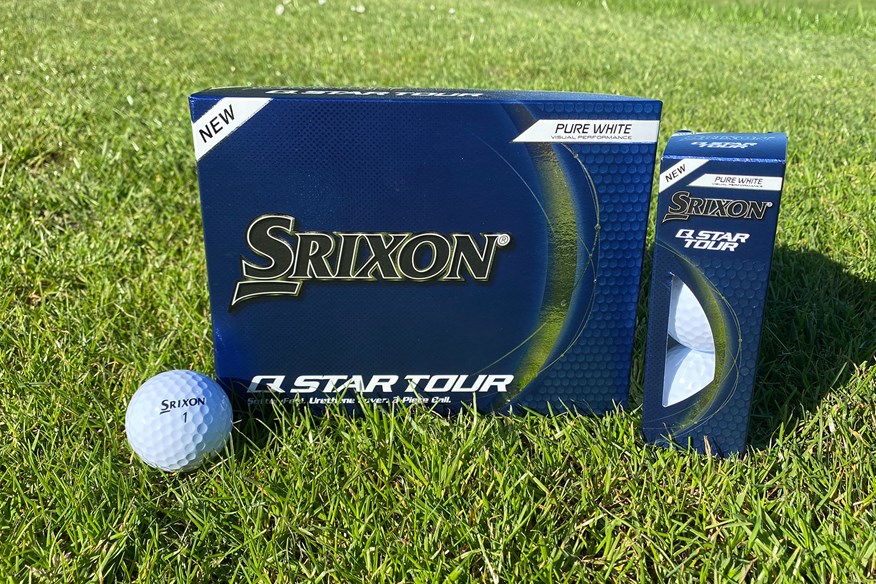

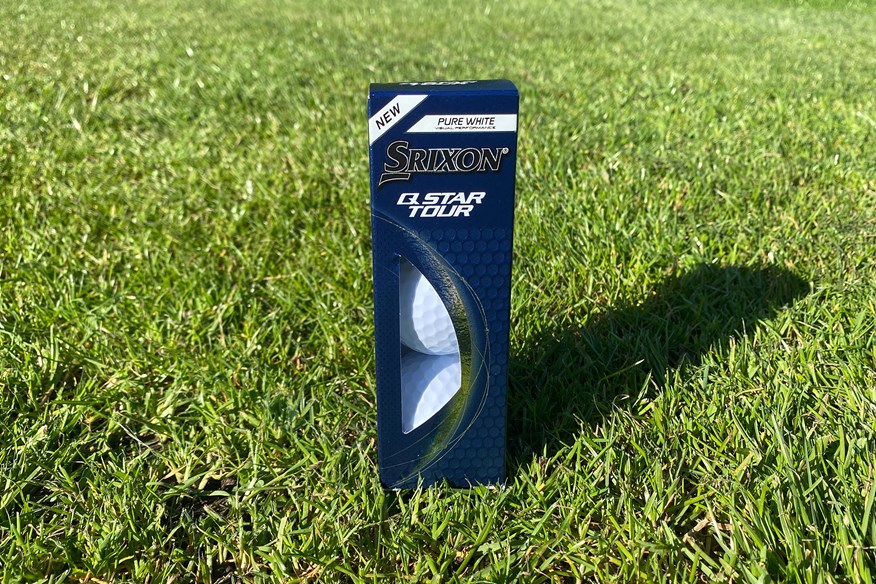
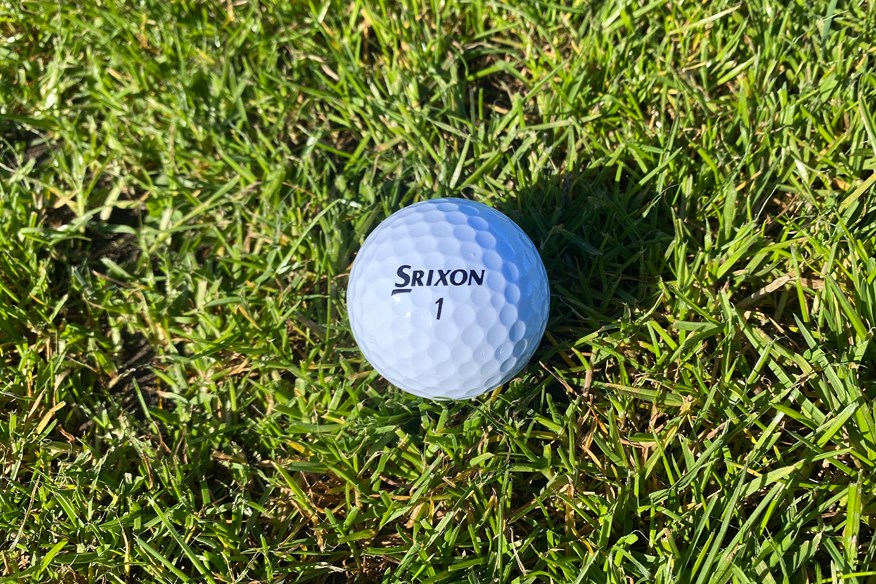
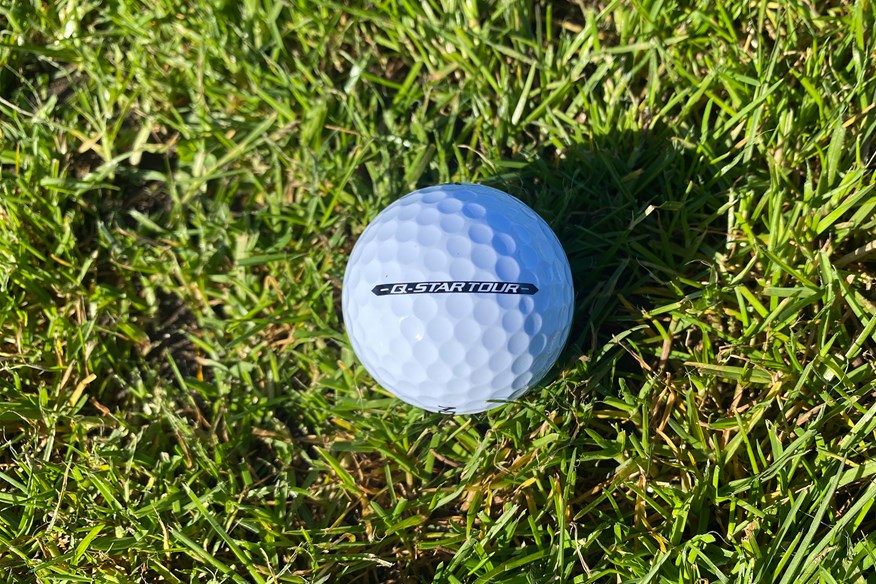
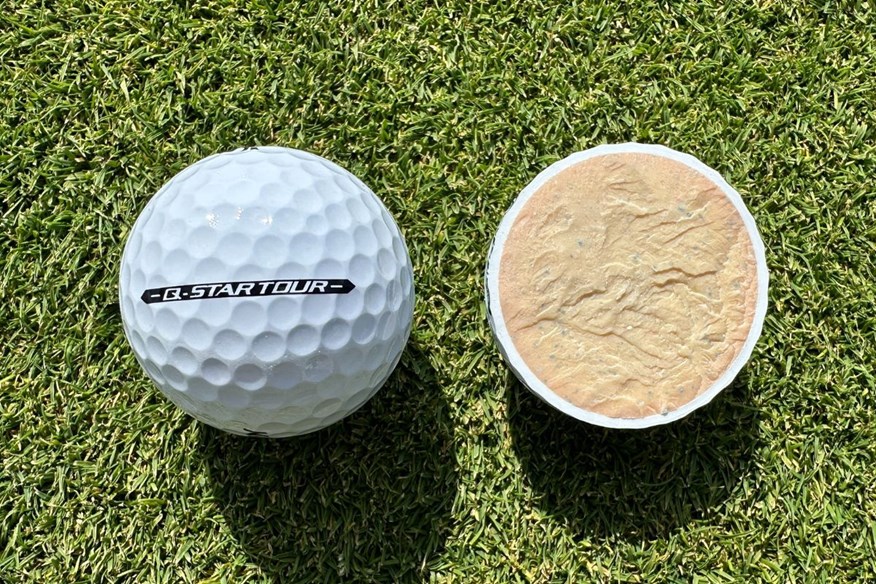
The Q-Star Tour is Srixon's bridging golf ball between the two-piece AD333 and the three-piece Tour-level Z-Star series. The Q-star Tour features plenty of technology found in the Z-Star golf balls, but it just doesn't perform as well.
You'd probably expect that, given it's a cheaper model than all three Z-Star golf balls, but against other three-piece club golfer models, the Q-Star Tour is a brilliant option. This golf ball performs very well in its approach play, ranking best of all golf balls in this category, thanks to its steep descent angle (45°), impressive backspin (4,568), and incredible carry distance consistency - ranking 2nd overall.
The Q-Star Tour is the gold medal winner for approach play performance, and with how strong it is in the 7-iron shot, it helped it achieve the gold medal for tee to green performance at 93mph, and the silver medal at 114mph and 78mph.
You won't be blown away by the Q-Star Tour's performance off the tee, but it's strong enough to make this the overall best three-piece club golfer model for tee to green performance at all three swing speeds.
On-course verdict
The Q-star Tour is very easy to enjoy because it contains some technology found in the premium Z-Star range, but it's a fraction of the price.
Obviously, the Q-Star Tour's performance isn't as high as the three Z-Star golf balls, but it's a very strong performer for mid-handicappers wanting a solid golf ball from tee to green.
Someone I play golf with regularly often switches to the Q-Star Tour because of the fact you're getting close to premium performance, and it's not as gut-wrenching if you lose one.
If you're looking for distance, the Q-Star Tour might not be your first choice, but for control and spin, it's a very good option. What you lose in distance off the tee is definitely made up for with what you gain in spin and control when approaching greens.
Read our full Srixon Q-Star Tour golf ball review.
Pros
- Good performance from tee to green
- Impressive feel from every club in the bag
- Wind doesn't massively hamper distance
Cons
- Distance isn't its strong suit
| Carry distance (yds) | Driver 114mph - 267.4 | Driver 93mph - 205.5 | Driver 78mph - 160.5 | 7-iron - 155.6 |
| Ball speed (mph) | Driver 114mph - 161.8 | Driver 93mph - 132.6 | Driver 78mph - 112.8 | 7-iron - 108.4 |
| Backspin (rpm) | Driver 114mph - 2,828 | Driver 93mph - 2,720 | Driver 78mph - 2,428 | 7-iron - 4,568 | Pitch - 5,575 |
| Launch angle (°) | Driver 114mph - 11 | Driver 93mph - 12.7 | Driver 78mph - 14 | 7-iron - 21.2 | Pitch - 31.5 |
| Descent angle (°) | Driver 114mph - 37.4 | Driver 93mph - 31.9 | Driver 78mph - 27.4 | 7-iron - 45 | Pitch - 37.2 |
| Peak height (yds) | Driver 114mph - 31.9 | Driver 93mph - 21.8 | Driver 78mph - 15.5 | 7-iron - 29.5 | Pitch - 7.3 |
| Compression (psi) | 76 |
- FastLayer core
- Spin Skin coating
- Ultra-thin urethane cover
- Speed dimple pattern
- 338 dimples
- 3-Piece construction
- Available in white and yellow
- An alternative model is the Divide
Gold medal for tee to green performance at 78mph and off-the-tee performance
The Callaway ERC Soft outshines the Chrome Soft in the three-piece club golfer category, mainly due to its tee to green performance. The ERC Soft is the best golf ball in this category for tee to green performance at 78mph and the third-best at 93mph. Another award for this golf ball is the gold medal for off-the-tee performance.
This is a super strong golf ball off the tee - it's by far the best at 78mph with 161.4 carry yards and 113.2mph ball speed. At 93mph, it's right up there again, ranking first for carry distance (208.3yds) and second for ball speed (133.5mph). At 114mph, three golf balls blow the others away in this category, but the ERC Soft is best-of-the-rest (269.9yds and 162.5mph).
The biggest dip in performance for the ERC Soft is in approach play. This is the second-lowest spinning golf ball (4,154rpm) and has a 44.6° descent angle. That materialises into good distance (158.4yds), but that's not the focal point when playing into greens.
With short game performance, you can expect a golf ball that will grab and spin. The ERC Soft delivers strong spin numbers here with 5,592rpm - higher than the Chrome Soft.
The ERC Soft is one of the best three-piece club golfer models, and the fact it outshines the Chrome Soft draws serious, warranted attention.
On-course verdict
The Callaway ERC Soft is a golf ball I really enjoy playing with because it feels like a golf ball you can absolutely hammer, and it will behave. This golf ball's performance from tee to green is nothing to be snubbed at.
Off the tee, the ERC Soft travels well, with minimal long-game spin. For my game, this isn't optimal, but I imagine most golfers will appreciate this. Around the greens, it's a different story. The ERC Soft is easy to control and spin. However, I don't think it's as impressive as the previous generation.
This is a soft-feeling golf ball - as the name suggests - and I find it to be lacking in feedback and response because of how soft it is. You might think otherwise, but personally, I want a golf ball with a touch more feedback.
The ERC Soft is a fantastic golf ball from tee to green at a great price. I prefer this model over the Chrome Soft, although they are both fun golf balls.
Pros
- Very soft feel
- Good tee to green performance
- Impressive distance
Cons
- Lacks feedback and response
| Carry distance (yds) | Driver 114mph - 269.9 | Driver 93mph - 208.3 | Driver 78mph - 161.4 | 7-iron - 158.4 |
| Ball speed (mph) | Driver 114mph - 162.5 | Driver 93mph - 133.4 | Driver 78mph - 113.2 | 7-iron - 108.6 |
| Backspin (rpm) | Driver 114mph - 2,690 | Driver 93mph - 2,635 | Driver 78mph - 2,388 | 7-iron - 4,154 | Pitch - 5,592 |
| Launch angle (°) | Driver 114mph - 11.1 | Driver 93mph - 13 | Driver 78mph - 14 | 7-iron - 21.6 | Pitch - 31.4 |
| Descent angle (°) | Driver 114mph - 36.8 | Driver 93mph - 32.2 | Driver 78mph - 27.3 | 7-iron - 44.6 | Pitch - 37.1 |
| Peak height (yds) | Driver 114mph - 31.5 | Driver 93mph - 22.4 | Driver 78mph - 15.5 | 7-iron - 29.7 | Pitch - 7.3 |
| Compression (psi) | 87 |
- Hyper elastic SoftFast core
- Hybrid cover
- GRIP urethane coating
- High-speed mantle
- Advanced alignment from Triple Track technology
- 332 dimples
- 3-Piece construction
- Available in white and yellow
- Alternative models include Truvis and 360° Fade
Bridgestone's longest 3-piece golf ball
There isn't an awful lot to say about the Bridgestone Tour B RX golf ball other than out of the five three-piece Bridgestone golf balls, including the four members of the Tour B range, the Tour B RX is the longest golf ball, delivering 268.9 carry yards at the 114mph driver swing speed.
At 93mph and 78mph, the Tour B RX isn't as long as other three-piece club golfer models, nor is it as long as other three-piece Bridgestone golf balls. However, at both swing speeds, it is longer than the higher-spinning Tour B RXS.
Although the Tour B RX is sold as the more distance-oriented Tour B model for golfers who swing their driver below 105mph, it's not too far behind the Tour B RXS with regard to spin in approach play and short game performance. The Tour B RX generates 4,733rpm with the 7-iron and 5,645rpm with the 40-yard pitch shot. In both instances, it's within 100rpm of the higher-spinning Tour B RXS.
The Tour B RX is a solid golf ball, but it's not going to blow you away with its performance. You can expect all-around performance, with a slight emphasis on distance over spin.
On-course verdict
The Bridgestone Tour B RX isn't a golf ball I would consider playing with because it doesn't suit my game. For that reason, I trusted one of my playing partners to offer his verdict on this golf ball.
The Tour B RX is designed for golfers who swing their driver slower than 105mph and prioritise distance over spin. Thankfully, someone I regularly play golf with falls into that category.
He enjoyed the mindset technology most about this golf ball, which tells you how good that is, considering with this golf ball in play, he recorded two rounds of 75.
Distance was where he expected, and so was spin. He doesn't play with a lot of spin through choice, and this golf ball allowed him to continue chasing the ball up the fairway off the tee and towards the flag on the greens.
If you would benefit from more spin, depending on your swing speed, you'll want either the Tour B RXS or Tour B XS in play.
The Tour B RX is a model played on the Champions Tour but not on the PGA or DP World Tour, hence why it's more suited to club golfers with a swing speed south of 105mph.
If you're looking to maximise distance, the Tour B RX is a model well worth your consideration.
Pros
- Competitive distance
- Impressive spin and control
- Delivers on its promise
Cons
- Not the most exciting golf ball
| Carry distance (yds) | Driver 114mph - 268.9 | Driver 93mph - 206.5 | Driver 78mph - 160.4 | 7-iron - 155.4 |
| Ball speed (mph) | Driver 114mph - 161.8 | Driver 93mph - 133.1 | Driver 78mph - 112.9 | 7-iron - 108.8 |
| Backspin (rpm) | Driver 114mph - 2,732 | Driver 93mph - 2,780 | Driver 78mph - 2,532 | 7-iron - 4,733 | Pitch - 5,645 |
| Launch angle (°) | Driver 114mph - 11.3 | Driver 93mph - 12.6 | Driver 78mph - 13.8 | 7-iron - 20.7 | Pitch - 30.9 |
| Descent angle (°) | Driver 114mph - 37.4 | Driver 93mph - 32.2 | Driver 78mph - 27.5 | 7-iron - 44.9 | Pitch - 36.4 |
| Peak height (yds) | Driver 114mph - 32.3 | Driver 93mph - 22 | Driver 78mph - 15.4 | 7-iron - 29.2 | Pitch - 7 |
| Compression (psi) | 99 |
- REACTIV X System
- REACTIV iQ Smart Cover Technology
- XCLRNT mid-layer
- Gradational Core
- Dual Dimple
- Seamless Cover
- 330 dimples
- 3-Piece construction
- Available in white and yellow
- An alternative model is the Mindset
Best three-piece golf balls 2025: Buying guide
The three-piece category of golf balls is extremely competitive – as you can see from the number of models in our 2025 robot test. It’s certainly a reason as to why we split this category into two, but it’s not the only reason, or even the main reason.
Not all three-piece golf balls perform the same. And this is arguably the category of golf balls with the most differences between models. Some balls have crossovers in their performance, and given the success of the Titleist Pro V1, many brands try to replicate its performance, but I don’t think any balls in our robot test have managed it as well as Legato.
That being said, not every three-piece golf ball is aiming to replicate the Pro V1. Within this one construction category, you have such a wide range of golf balls from the best distance golf balls to the best premium golf balls.
Depending on your needs and requirements from a golf ball, reading through our detailed buying guide will hopefully provide you with some clarity as to which model will work best for you.
Ability
Regardless of your ability, you will find a model with the best three-piece golf balls that works for your game. Whether you’re a seasoned veteran or completely new to the game, the three-piece category is never out of the question.
I will always say the best four-piece and five-piece golf balls offer unrivalled performance – because that’s the case for me – but that’s not to say there isn’t a three-piece model that can perform as well, or better for you.
Budget
The world is your oyster when it comes to three-piece golf balls. Only wanting to spend £20? No problem. Wanting to spend £50? Absolutely fine.
Whether you’re working to a budget or not, there is a three-piece golf ball out there for you. Regardless of what you’re willing to spend on a golf ball, the most important consideration has to be whether it will improve your game.
Regardless of whether you’re leaning more towards three-piece Tour-level or three-piece club golfer models, you will be able to find a suitable option within your budget. However, if you’re struggling, upping your budget by £5 or £10 should help you land on an apt option.
If it’s the case that a £20 DTC golf ball enables you to play your best golf, then absolutely put that ball in play. However, if it’s hindering your performance, you’re much better off increasing your budget and finding a ball in this category that works.
Players who are new to the game or don’t get out often are more likely to budget when it comes to purchasing golf balls. Whereas more frequent and skilled golfers are less likely to budget and opt for more expensive golf balls. That’s not to say every golfer meeting one of those credentials behaves this way.
While I’ve probably been alive less number of years than some of you have played golf, I’ve had the pleasure of working in the golf industry for the entirety of my working life. During that time, I’ve seen golfers of all abilities splashing the cash on the latest golf clubs in the hope of improving their game and being thrifty when it comes to spending on golf balls – I’ve been a culprit of this myself in my early golfing days!
Feel
The vast majority of golfers look for soft-feeling golf balls, and there are tons of those in the three-piece category. I’m struggling to think of one “firm” three-piece golf ball. Certain models feel firmer than others, but I wouldn’t class any as being firm. If you prefer a firmer-feeling model, it’s worth having a look at the best four-piece and five-piece golf balls.
I enjoy playing with firmer golf balls like the Wilson Staff Model X and Titleist Pro V1x because I feel as though they provide more feedback and a stronger response. However, feel is completely personal, and like I say, it’s tough to find a super-firm golf ball in this category because most are made to be soft to please the needs of more golfers.
Performance
There is a huge gap in performance between the best three-piece golf balls and those at the bottom of the pile. With the top three-piece models, you can expect competitive distance, spin, and control throughout your golf bag.
A golf ball’s intended performance tends to be outlined on the box. It relates to the technology and how that technology has been constructed and distributed. With certain three-piece golf balls, you might want to take the information on the box with a pinch of salt because no brand is ever going to tell you their ball offers no distance and spin.
The results from our mammoth robot test should help you see through the jargon. However, the best three-piece models, both Tour-level and club golfer, deliver from tee to green with regard to performance.
Spin
Whether you’re searching for the best low-spin golf balls or the best high-spin golf balls, the three-piece category has you covered.
I’ve seen firsthand how playing with the right golf ball can positively impact spin throughout your bag. During a ball fitting at Titleist, I discovered that a Titleist Pro V1x and Titleist Velocity performed very similarly with my driver, but with a 7-iron, the spin dropped slightly with the Velocity, and then with a 60° wedge, the spin fell massively with the Velocity.
Spin in the golf ball comes from the combination of layers within the golf ball reacting with one another. Depending on the cover material and how the layers have been built to interact, golf balls in this category will either spin more in approach play or be specifically designed to maintain lower (still workable) spin. Cheaper golf balls tend to consist of two layers: the cover and core. Therefore, they don’t have the number of layers required to produce astronomical spin when attacking pins.
Most golf balls in this category sport a urethane cover. All of the three-piece Tour-level models do, and there’s only a handful of club golfer models that don’t. Most notably, the Vice Tour, which is the No.1 club golfer model. Urethane covers help to generate more spin because it’s a more flexible material compared to ionomer or surlyn, which doesn’t create as much friction with the clubface as urethane does.
Spin is massively important because it can either make you hit and hold a green or hit and fly over the green. The best golf balls for spin are by far premium golf balls, which consist of the best golf balls from this category. If you feel as though you need high levels of spin when attacking greens, have a look at the best high-spin golf balls. Alternatively, if you feel as though spin is hurting your game, check out the best low-spin golf balls.
Distance
I would honestly say that distance is the last factor to consider when purchasing golf balls. The best way to figure out which golf balls are best for you is by working your way back from the green to the tee box. The best way of doing this is with a launch monitor to see your numbers, but if you don’t have access to one, you can do it with your eye very easily.
Start by hitting wedge shots into the green and see which balls are performing best with spin, then work your way back to 7-iron distance and look for the same numbers with slightly more of an eye on carry distance. You should have whittled it down to one or two golf balls, hit them off the tee, and look at which performs the best.
If you’re testing a wide range of golf balls, including the best three-piece golf balls and cheaper golf balls, I guarantee a premium golf ball will always come out on top. You will find one that performs well for you, or you might have the luxury of deciding between a handful.
By testing golf balls this way, you’ll end up with the ball that performs best in the short game, which is where you score. Distance is important, but there are other ways of improving distance without sacrificing spin in a golf ball.
Colour
The most common golf ball colour is white; however, there are plenty of other colours and designs to choose from. More vibrant colours, such as yellow, orange, or green, are all easy to pick up, and they help some people with visibility – hence why they make for the best winter golf balls.
Other ways of adding colour to the golf ball can be by design, whether it be a splash of colour seen on Vice golf balls or an alignment design which also helps with visibility, such as TaylorMade’s Pix golf balls or Callaway’s Triple Track golf balls.
If you’ve only ever played with white golf balls, it might be worth trying a more colourful golf ball, especially if you’re always the one asking your playing partners, “Where did that one go?”.
Alignment
More and more golf balls are being released with enhanced alignment, and even standard golf balls have a more prominent alignment stamp now than they’ve ever had. The majority of brands now offer golf balls with enhanced alignment aids. The enhanced alignment aids can be extremely useful for putting and even lining up shots on the tee. Another plus of alignment golf balls is the alignment serves as a tool for finding your golf ball either in the air or among the trees.
Best three-piece golf balls 2025: FAQs
Best 3-piece Tour-level golf balls 2025: Robot test data
| Golf ball | Srixon Z-Star Diamond | Srixon Z-Star XV | Srixon Z-Star | Bridgestone Tour B XS | PXG Xtreme Tour X | Mizuno Pro X | Vice Pro | Titleist Pro V1 |
| Compression | 106 | 112 | 92 | 99 | 112 | 116 | 106 | 98 |
| 114mph Driver Ball Speed (mph) | 163.6 | 163.4 | 162.7 | 162.7 | 164.0 | 164.2 | 163.1 | 163.9 |
| 114mph Driver Launch Angle (°) | 11.2 | 11.2 | 11.1 | 11.0 | 11.2 | 11.1 | 10.8 | 11.1 |
| 114mph Driver Backspin (rpm) | 2988 | 2936 | 2900 | 2964 | 2829 | 2743 | 2829 | 2684 |
| 114mph Driver Carry Distance (yds) | 270.7 | 270.6 | 269.4 | 268.4 | 272.8 | 273.5 | 269.8 | 273.2 |
| 114mph Driver Height (yds) | 34.5 | 34.0 | 33.3 | 33.1 | 33.6 | 32.9 | 31.9 | 32.4 |
| 114mph Driver Descent Angle (°) | 39.4 | 39.0 | 38.5 | 38.6 | 38.4 | 37.7 | 37.4 | 37.2 |
| 93mph Driver Ball Speed (mph) | 133.8 | 133.6 | 133.1 | 133.6 | 134.1 | 134.5 | 133.6 | 133.8 |
| 93mph Driver Launch Angle (°) | 12.5 | 12.6 | 12.6 | 12.3 | 12.7 | 12.8 | 12.9 | 12.8 |
| 93mph Driver Backspin (rpm) | 2838 | 2857 | 2859 | 3059 | 2688 | 2700 | 2759 | 2709 |
| 93mph Driver Carry Distance (yds) | 207.8 | 207.7 | 206.6 | 206.7 | 209.4 | 210.5 | 208.6 | 208.7 |
| 93mph Driver Height (yds) | 22.4 | 22.6 | 22.4 | 22.8 | 22.4 | 22.8 | 22.8 | 22.5 |
| 93mph Driver Descent Angle (°) | 32.6 | 32.9 | 32.8 | 33.6 | 32.2 | 32.5 | 32.8 | 32.4 |
| 78mph Driver Ball Speed (mph) | 113.1 | 113.2 | 113.1 | 112.8 | 113.0 | 113.1 | 113.1 | 113.1 |
| 78mph Driver Launch Angle (°) | 13.6 | 13.6 | 13.7 | 13.7 | 14.0 | 14.0 | 13.8 | 13.8 |
| 78mph Driver Backspin (rpm) | 2719 | 2654 | 2693 | 2795 | 2458 | 2426 | 2499 | 2525 |
| 78mph Driver Carry Distance (yds) | 161.0 | 160.8 | 161.1 | 160.5 | 160.8 | 161.3 | 160.7 | 161.0 |
| 78mph Driver Height (yds) | 15.7 | 15.5 | 15.8 | 15.8 | 15.5 | 15.6 | 15.4 | 15.5 |
| 78mph Driver Descent Angle (°) | 28.1 | 27.7 | 28.1 | 28.4 | 27.4 | 27.4 | 27.3 | 27.5 |
| 7-Iron Ball Speed (mph) | 108.7 | 108.7 | 108.7 | 109.0 | 108.7 | 109.0 | 108.8 | 108.3 |
| 7-Iron Launch Angle (°) | 20.5 | 20.7 | 20.8 | 20.3 | 20.9 | 20.9 | 21.3 | 21.1 |
| 7-Iron Backspin (rpm) | 5149 | 4930 | 4937 | 5170 | 4820 | 4689 | 4452 | 4598 |
| 7-Iron Carry Distance (yds) | 153.1 | 154.2 | 154.1 | 153.5 | 154.7 | 155.9 | 156.9 | 155.3 |
| 7-Iron Height (yds) | 29.3 | 29.3 | 29.5 | 29.1 | 29.5 | 29.4 | 29.6 | 29.3 |
| 7-Iron Descent Angle (°) | 45.3 | 45.2 | 45.3 | 45.2 | 45.2 | 45.0 | 44.9 | 44.9 |
| 40-Yard Pitch Ball Speed (mph) | 46.3 | 46.3 | 46.6 | 46.7 | 46.0 | 45.7 | 46.3 | 46.2 |
| 40-Yard Pitch Launch Angle (°) | 30.0 | 30.3 | 30.6 | 30.0 | 30.2 | 30.5 | 30.9 | 31.2 |
| 40-Yard Pitch Backspin (rpm) | 6137 | 5948 | 5926 | 6036 | 5961 | 5792 | 5708 | 5692 |
| 40-Yard Pitch Carry Distance (yds) | 39.3 | 39.5 | 40.1 | 40.0 | 39.0 | 38.7 | 39.9 | 39.9 |
| 40-Yard Pitch Height (yds) | 6.5 | 6.7 | 6.9 | 6.7 | 6.6 | 6.6 | 7.0 | 7.0 |
| 40-Yard Pitch Descent Angle (°) | 35.1 | 35.6 | 35.9 | 35.3 | 35.3 | 35.7 | 36.4 | 36.7 |
Best 3-piece club golfer golf balls 2025: Robot test data
| Golf ball | Vice Tour | Kirkland Signature V3.0 | Srixon Q-Star Tour | Callaway ERC Soft | Bridgestone Tour B RX | Callaway Chrome Soft | Wilson Triad | Titleist AVX |
| Compression | 112.0 | 107.0 | 76 | 87.0 | 99.0 | 81.0 | 89.0 | 84.0 |
| 114mph Driver Ball Speed (mph) | 163.3 | 163.5 | 161.8 | 162.5 | 161.8 | 162.3 | 161.7 | 162.8 |
| 114mph Driver Launch Angle (°) | 11.1 | 11.1 | 11.0 | 11.1 | 11.3 | 10.9 | 11.2 | 11.1 |
| 114mph Driver Backspin (rpm) | 2769 | 2873 | 2828 | 2690 | 2732 | 2767 | 2734 | 2613 |
| 114mph Driver Carry Distance (yds) | 271.4 | 271.0 | 267.4 | 269.9 | 268.9 | 268.6 | 268.2 | 271.1 |
| 114mph Driver Height (yds) | 32.6 | 33.2 | 31.9 | 31.5 | 32.3 | 31.5 | 31.7 | 31.4 |
| 114mph Driver Descent Angle (°) | 37.7 | 38.3 | 37.4 | 36.8 | 37.4 | 37.0 | 37.1 | 36.4 |
| 93mph Driver Ball Speed (mph) | 133.4 | 133.6 | 132.6 | 133.5 | 133.1 | 133.2 | 132.6 | 133.3 |
| 93mph Driver Launch Angle (°) | 13.0 | 12.7 | 12.7 | 12.9 | 12.6 | 12.9 | 12.7 | 13.0 |
| 93mph Driver Backspin (rpm) | 2635 | 2734 | 2720 | 2596 | 2780 | 2712 | 2707 | 2606 |
| 93mph Driver Carry Distance (yds) | 208.3 | 208.0 | 205.5 | 208.3 | 206.5 | 207.6 | 205.6 | 208.1 |
| 93mph Driver Height (yds) | 22.4 | 22.3 | 21.8 | 22.2 | 22.0 | 22.4 | 21.8 | 22.3 |
| 93mph Driver Descent Angle (°) | 32.2 | 32.3 | 31.9 | 31.8 | 32.2 | 32.4 | 31.9 | 32.0 |
| 78mph Driver Ball Speed (mph) | 113.0 | 112.8 | 112.8 | 113.2 | 112.9 | 112.8 | 112.5 | 112.9 |
| 78mph Driver Launch Angle (°) | 14.0 | 13.9 | 14.0 | 14.0 | 13.8 | 14.0 | 13.9 | 14.0 |
| 78mph Driver Backspin (rpm) | 2381 | 2572 | 2428 | 2388 | 2532 | 2474 | 2546 | 2408 |
| 78mph Driver Carry Distance (yds) | 160.8 | 160.5 | 160.5 | 161.4 | 160.4 | 160.5 | 159.7 | 160.4 |
| 78mph Driver Height (yds) | 15.4 | 15.6 | 15.5 | 15.5 | 15.4 | 15.5 | 15.5 | 15.3 |
| 78mph Driver Descent Angle (°) | 27.1 | 27.7 | 27.4 | 27.3 | 27.5 | 27.5 | 27.6 | 27.1 |
| 7-Iron Ball Speed (mph) | 108.7 | 108.6 | 108.4 | 108.6 | 108.8 | 108.7 | 108.5 | 108.2 |
| 7-Iron Launch Angle (°) | 21.5 | 20.7 | 21.2 | 21.6 | 20.7 | 21.3 | 21.1 | 21.2 |
| 7-Iron Backspin (rpm) | 4216 | 4861 | 4568 | 4154 | 4733 | 4356 | 4474 | 4429 |
| 7-Iron Carry Distance (yds) | 158.1 | 154.3 | 155.6 | 158.4 | 155.4 | 157.3 | 156.4 | 156.0 |
| 7-Iron Height (yds) | 29.6 | 29.1 | 29.5 | 29.7 | 29.2 | 29.5 | 29.3 | 29.2 |
| 7-Iron Descent Angle (°) | 44.6 | 45.0 | 45.0 | 44.6 | 44.9 | 44.7 | 44.7 | 44.7 |
| 40-Yard Pitch Ball Speed (mph) | 46.1 | 46.2 | 46.8 | 46.6 | 46.5 | 46.5 | 46.6 | 46.4 |
| 40-Yard Pitch Launch Angle (°) | 30.6 | 30.0 | 31.5 | 31.4 | 30.9 | 31.5 | 31.2 | 32.0 |
| 40-Yard Pitch Backspin (rpm) | 5967 | 6050 | 5575 | 5592 | 5645 | 5518 | 5554 | 5318 |
| 40-Yard Pitch Carry Distance (yds) | 39.3 | 39.2 | 40.9 | 40.6 | 40.1 | 40.5 | 40.5 | 40.6 |
| 40-Yard Pitch Height (yds) | 6.7 | 6.5 | 7.3 | 7.3 | 7.0 | 7.3 | 7.2 | 7.4 |
| 40-Yard Pitch Descent Angle (°) | 35.8 | 35.1 | 37.2 | 37.1 | 36.4 | 37.2 | 36.9 | 37.9 |
What to read next
For performance insights tailored to your swing speed and preferences, you can visit the following results pages:
- Best 4 and 5-piece golf balls
- Best 2-piece golf balls
- Best golf balls for fast swing speeds
- Best golf balls for average swing speeds
- Best golf balls for slow swing speeds
- Best golf balls for distance
- Best golf balls for approach play
- Best golf balls for short game
- Best golf ball for mid-handicaps
- Best golf balls for beginners
- Most consistent golf balls
